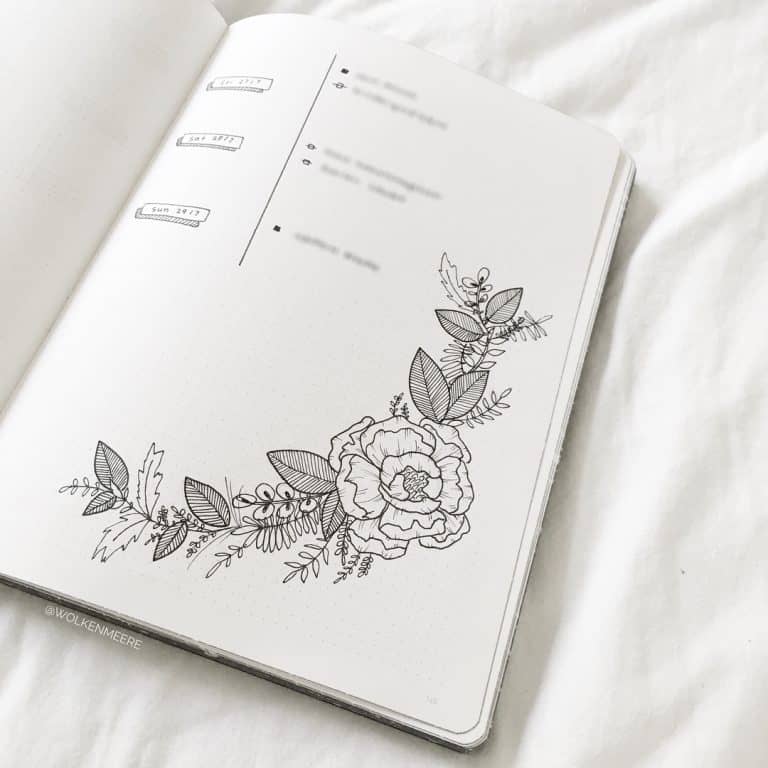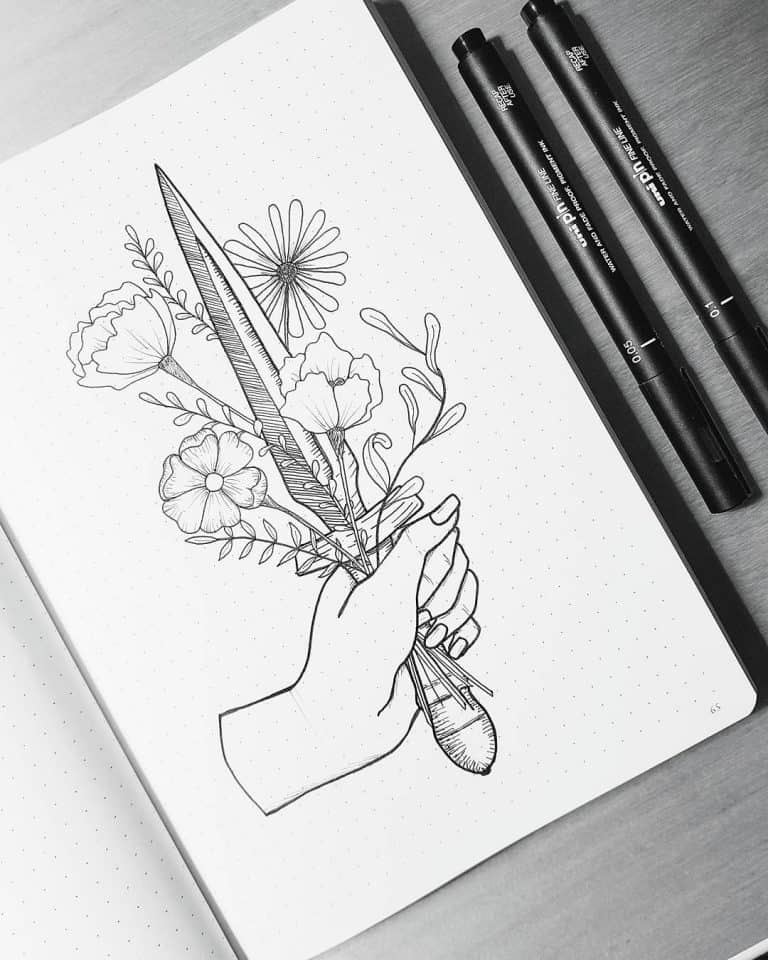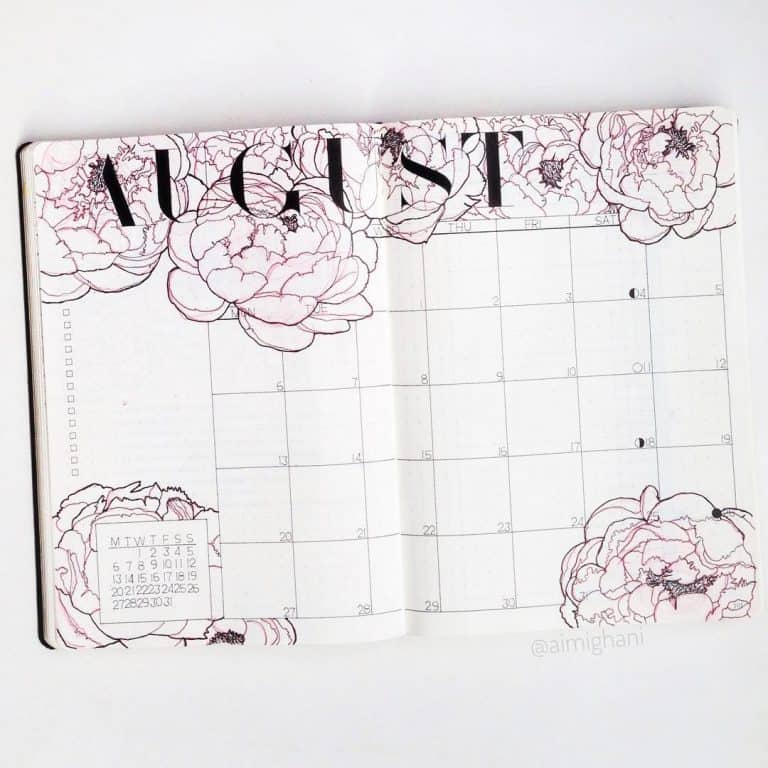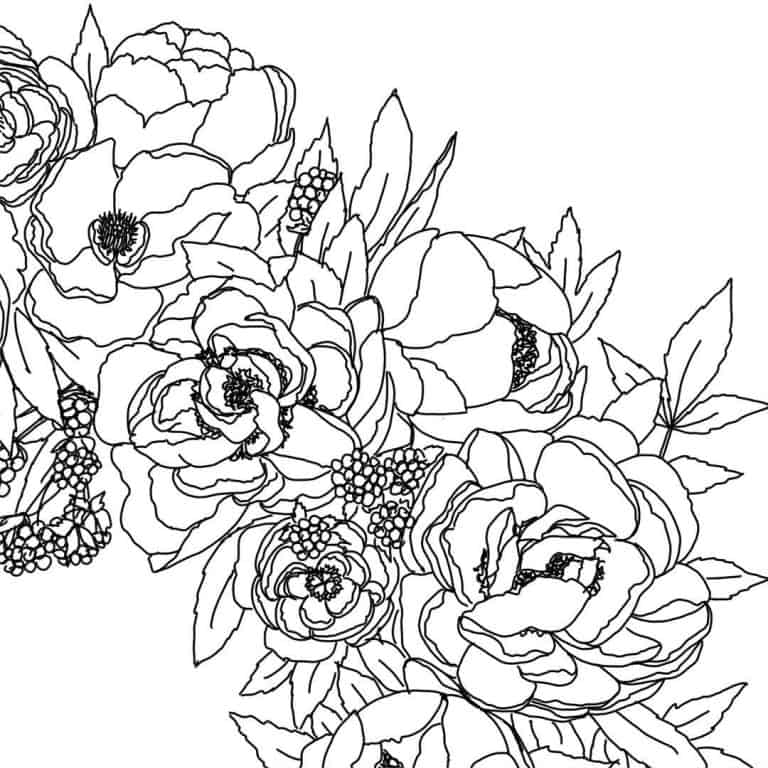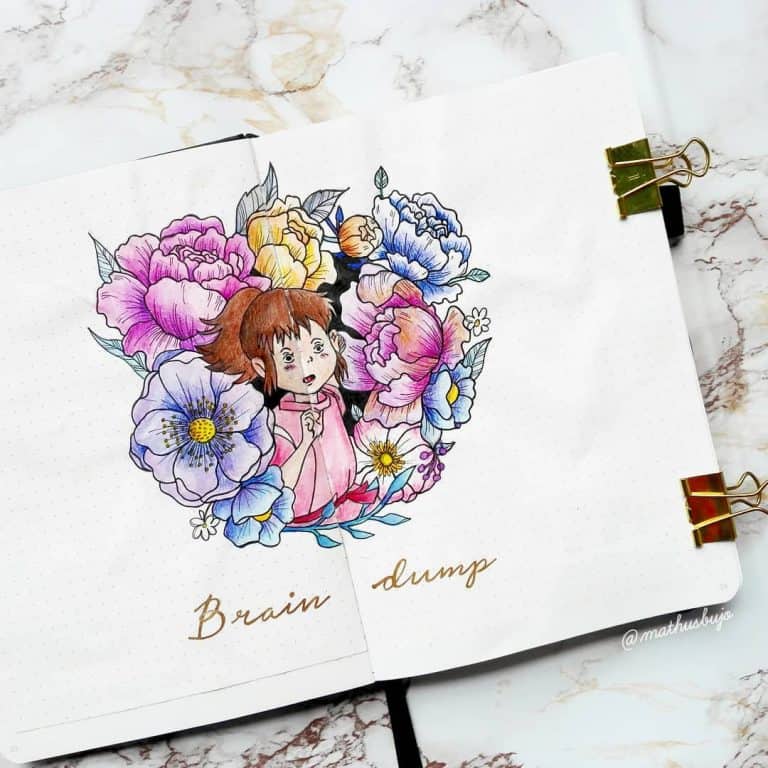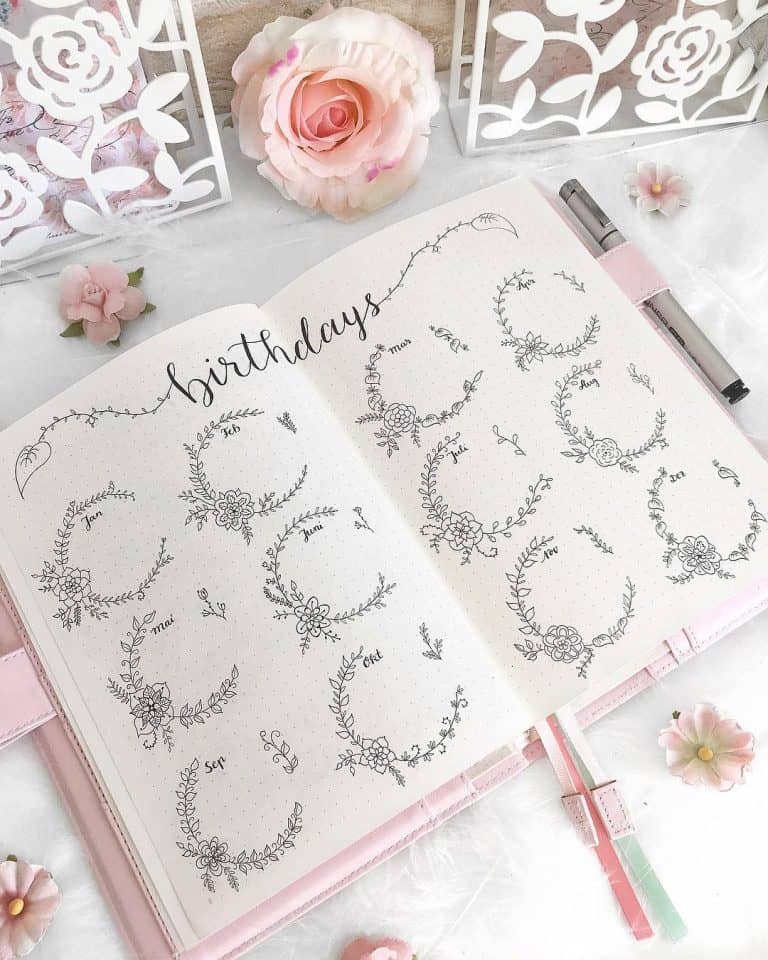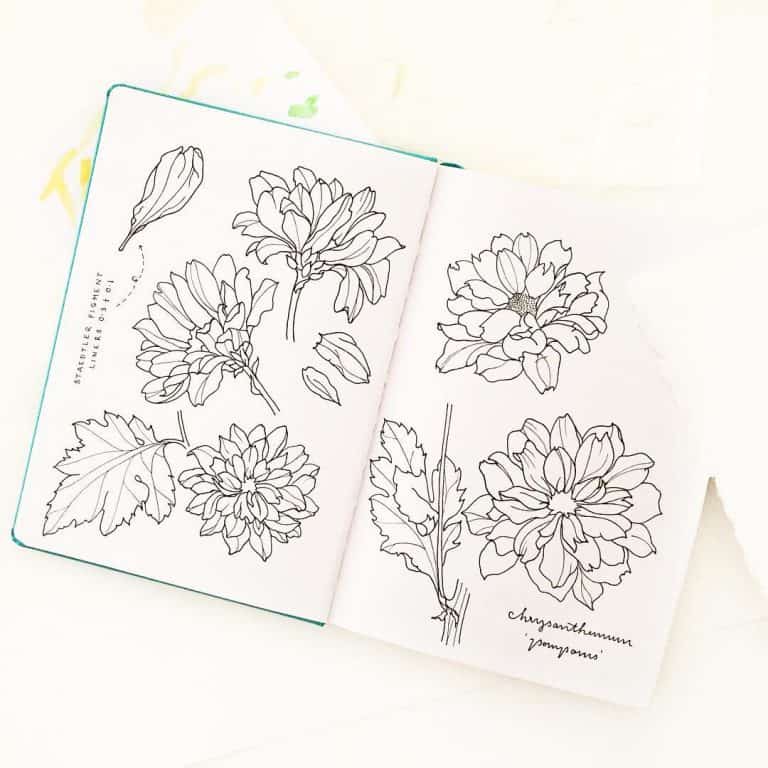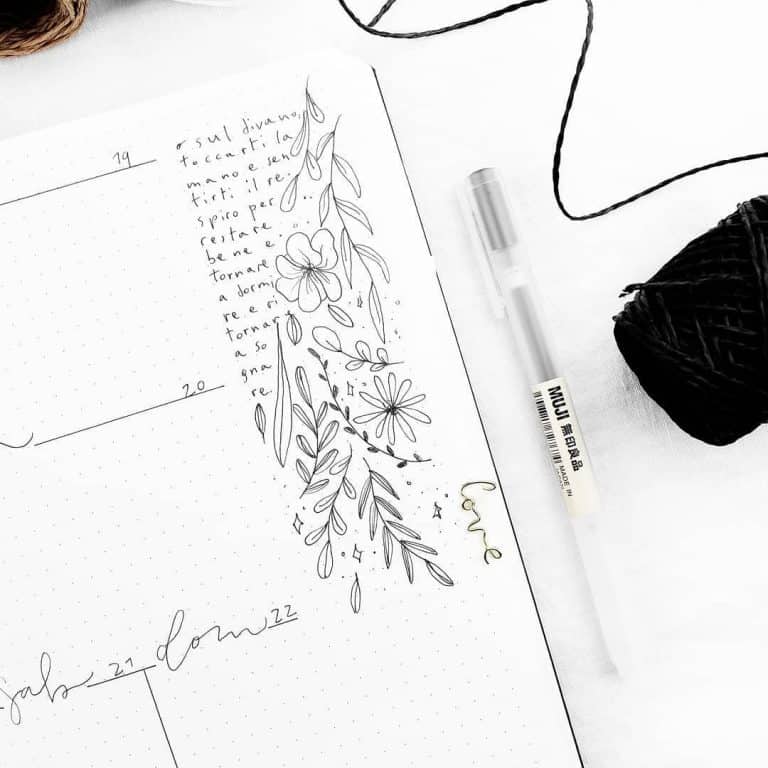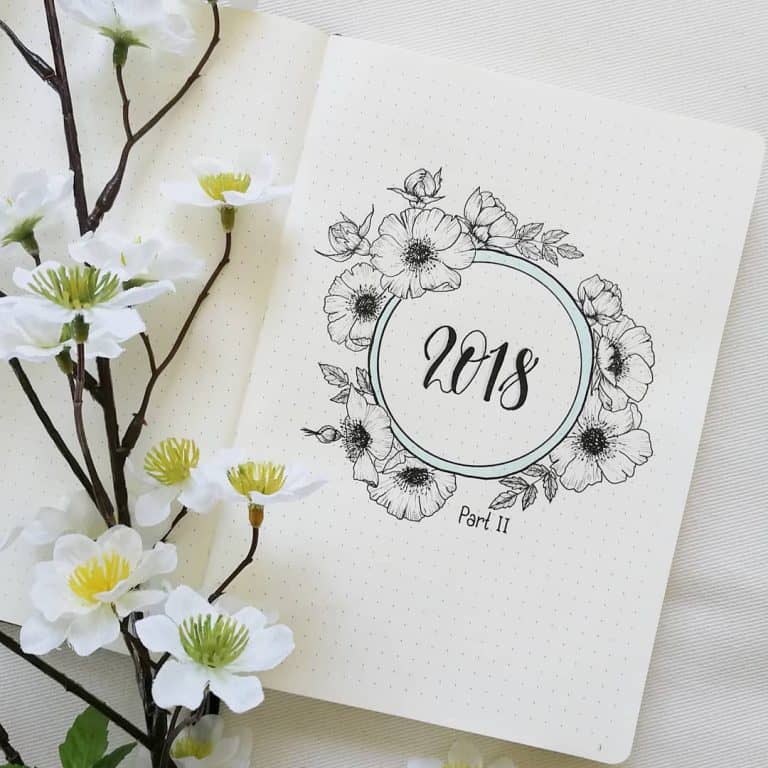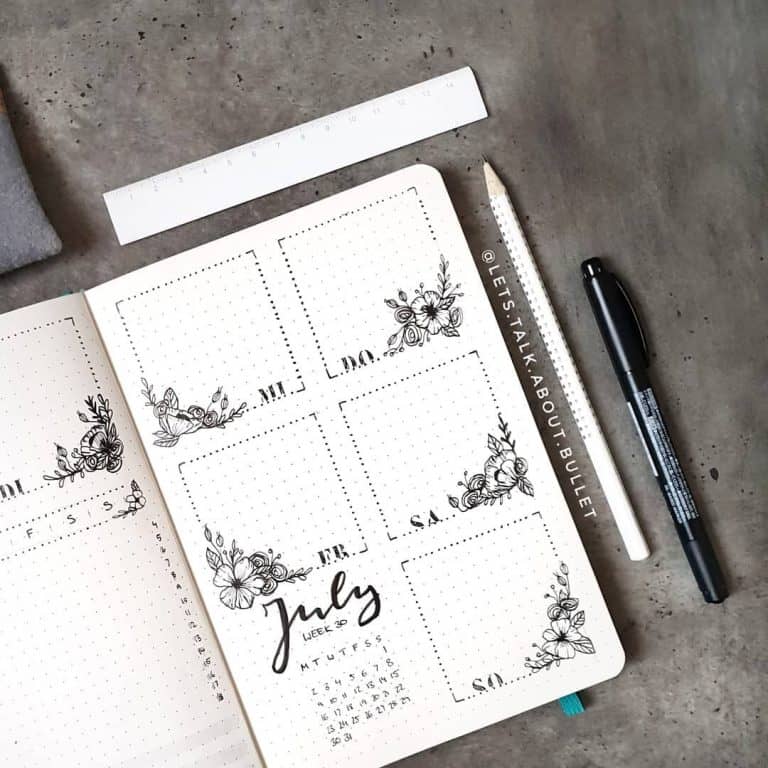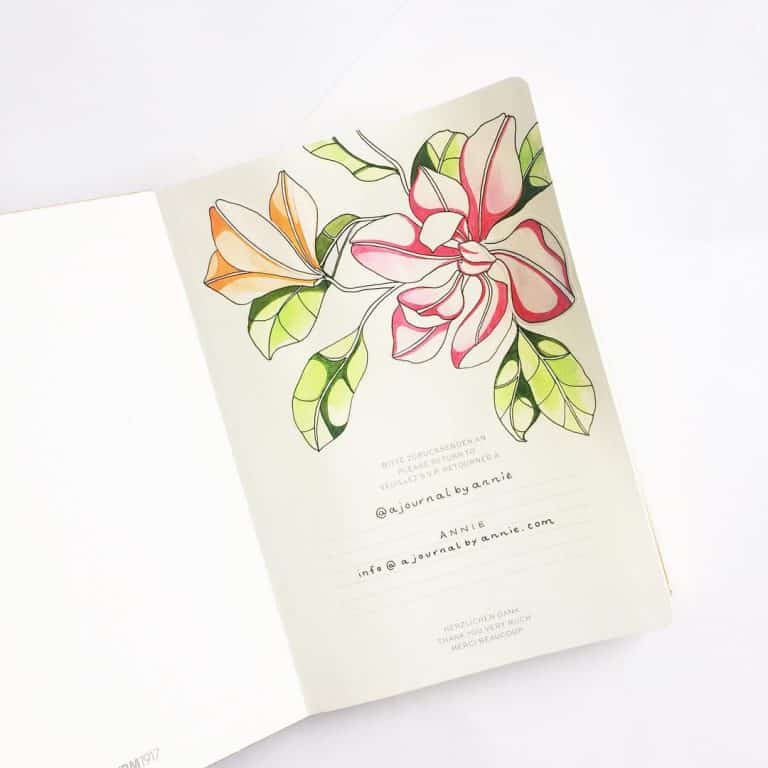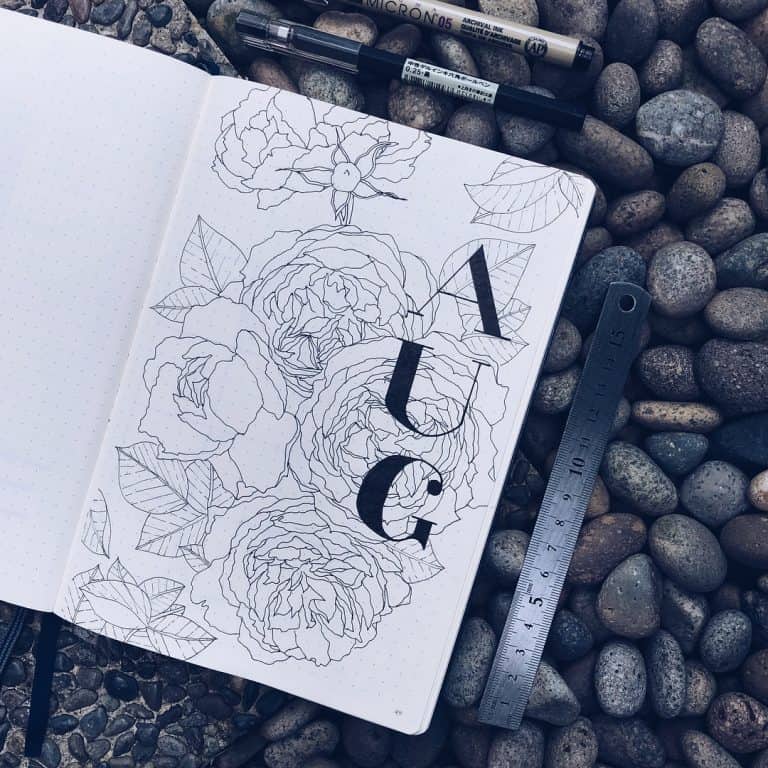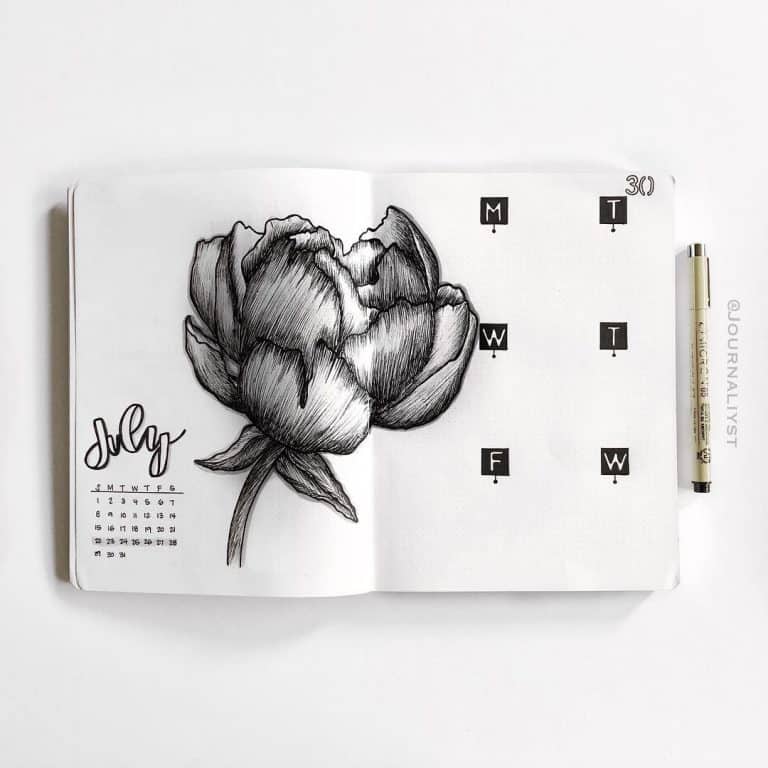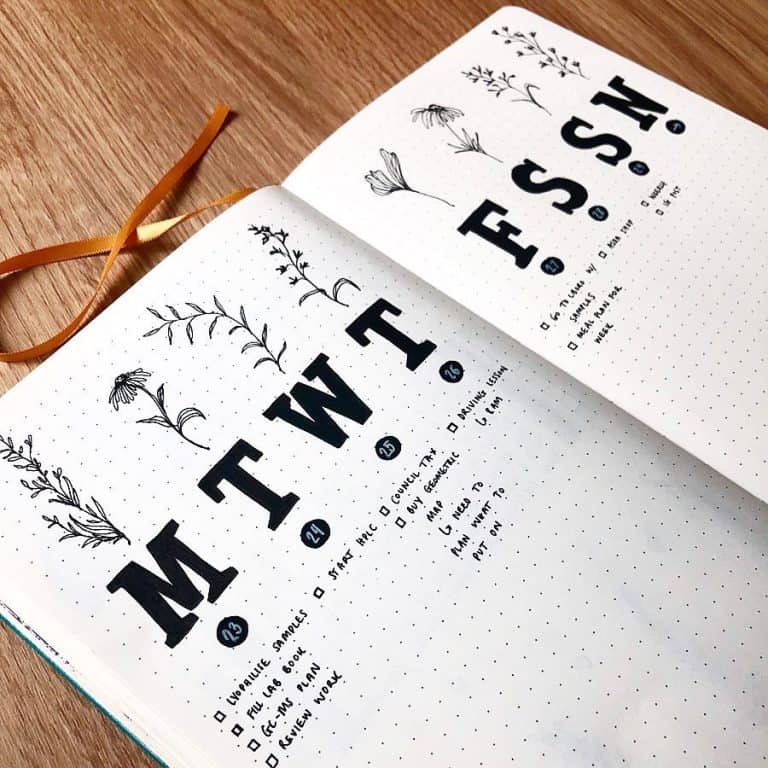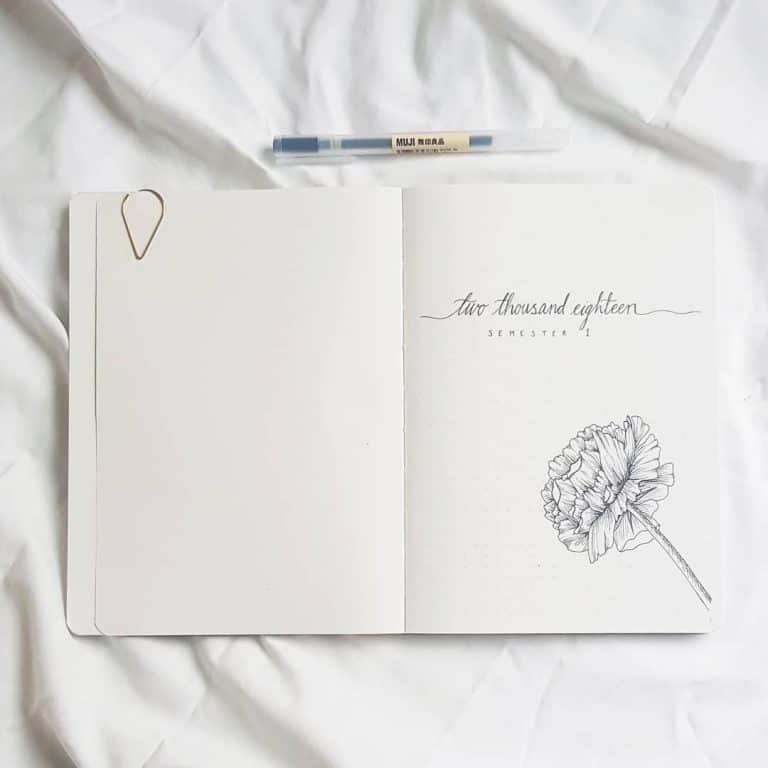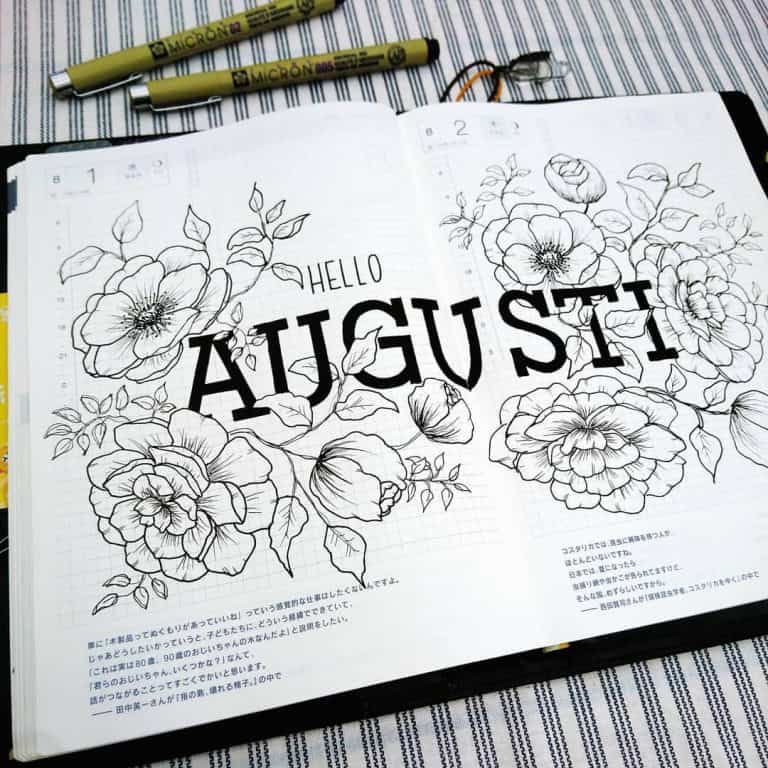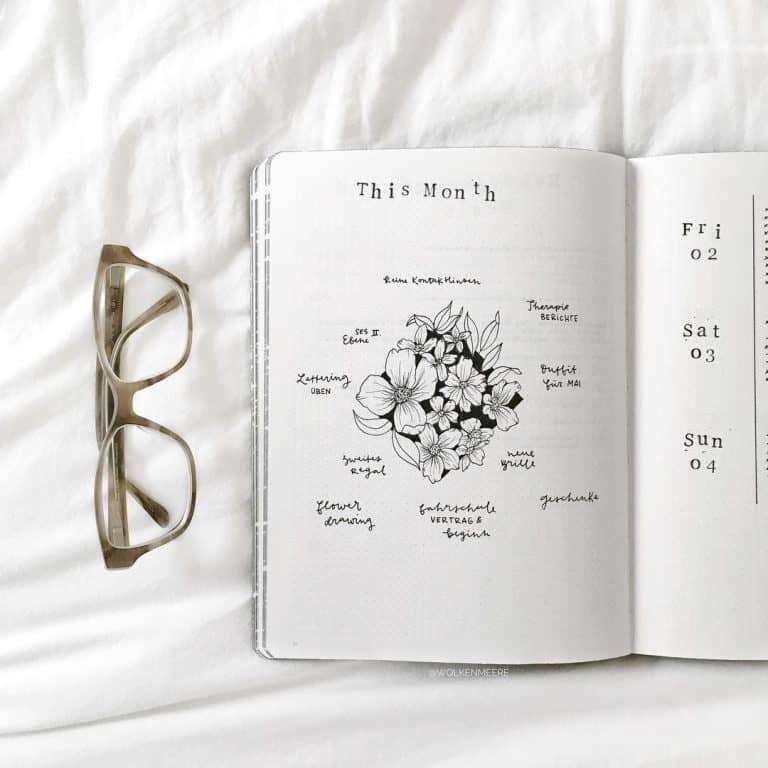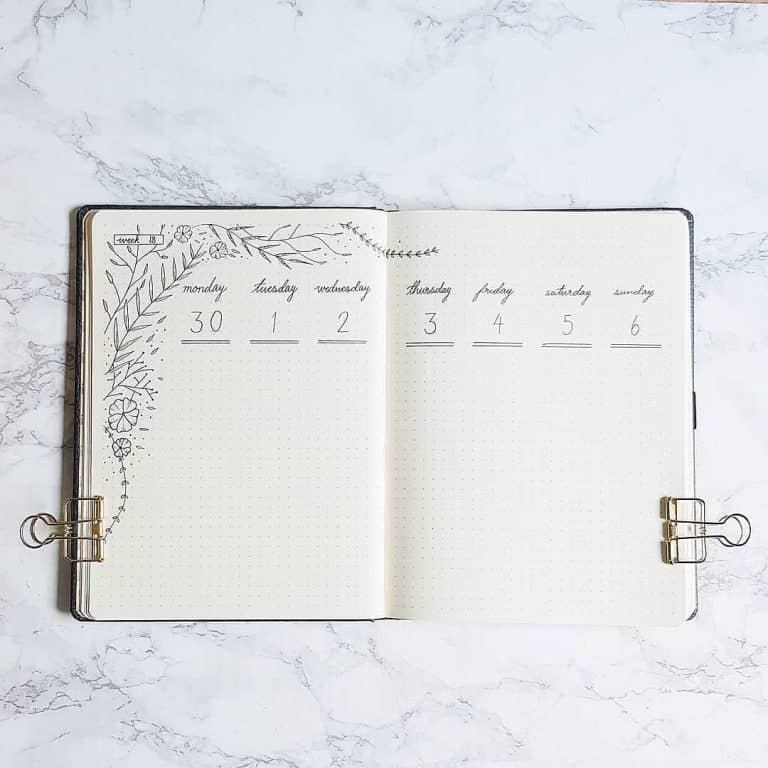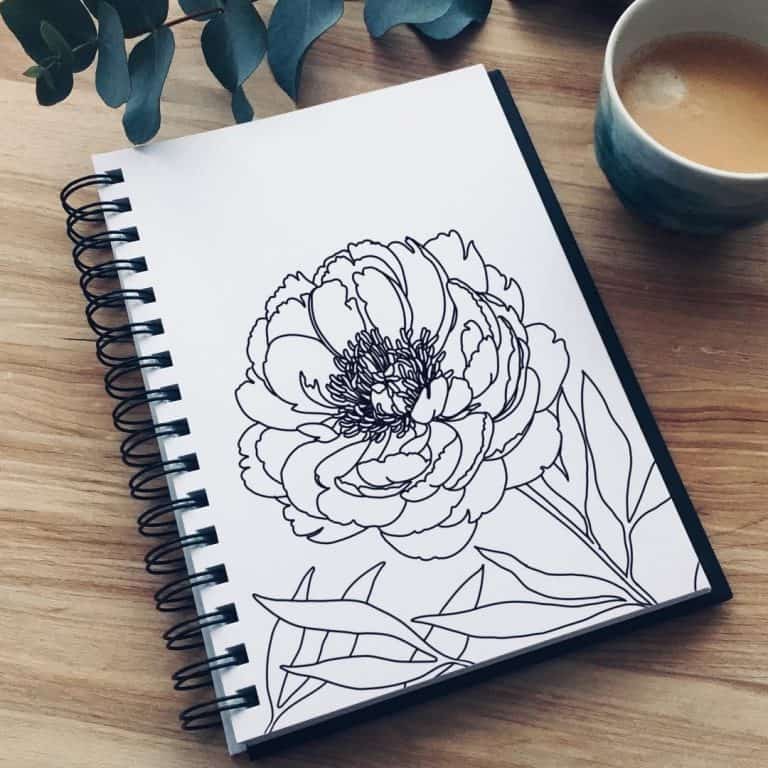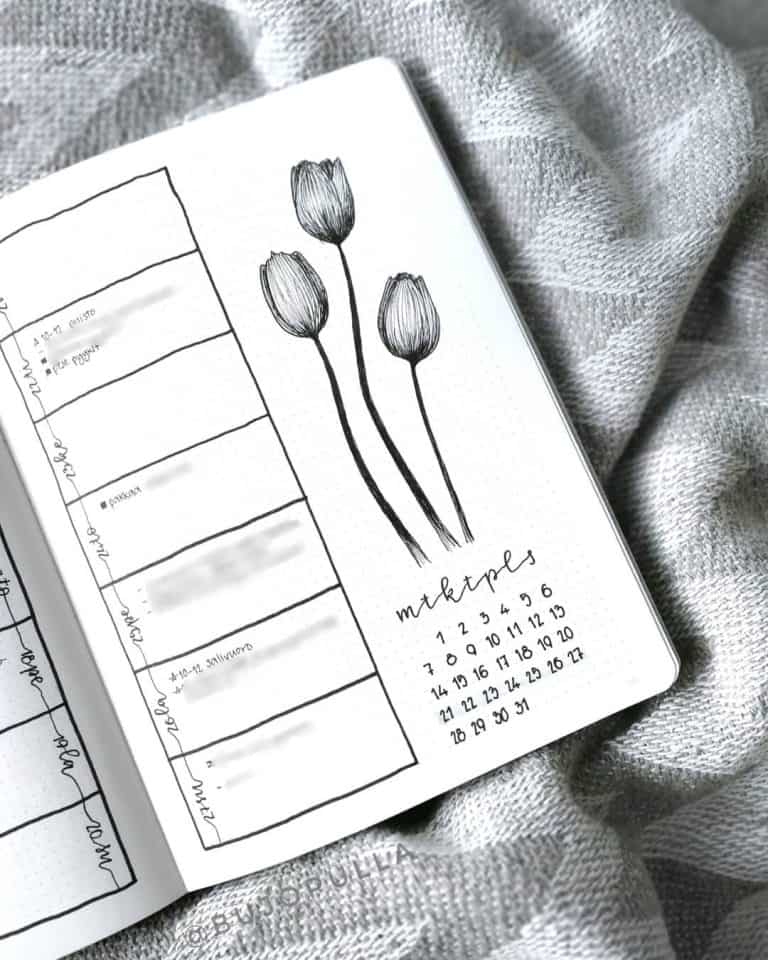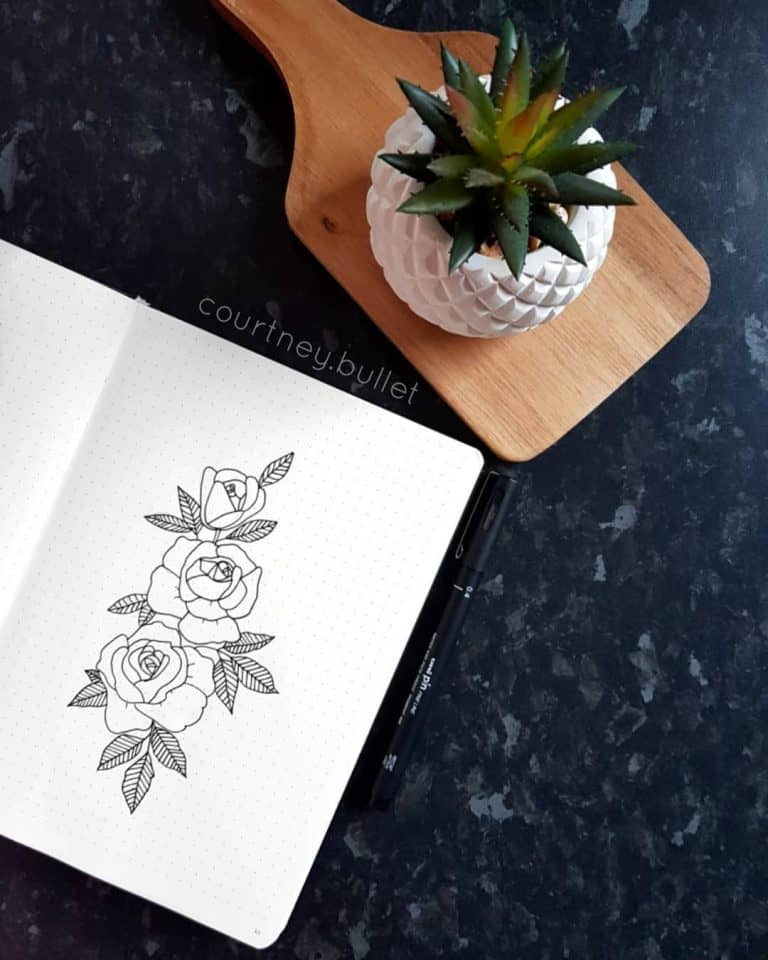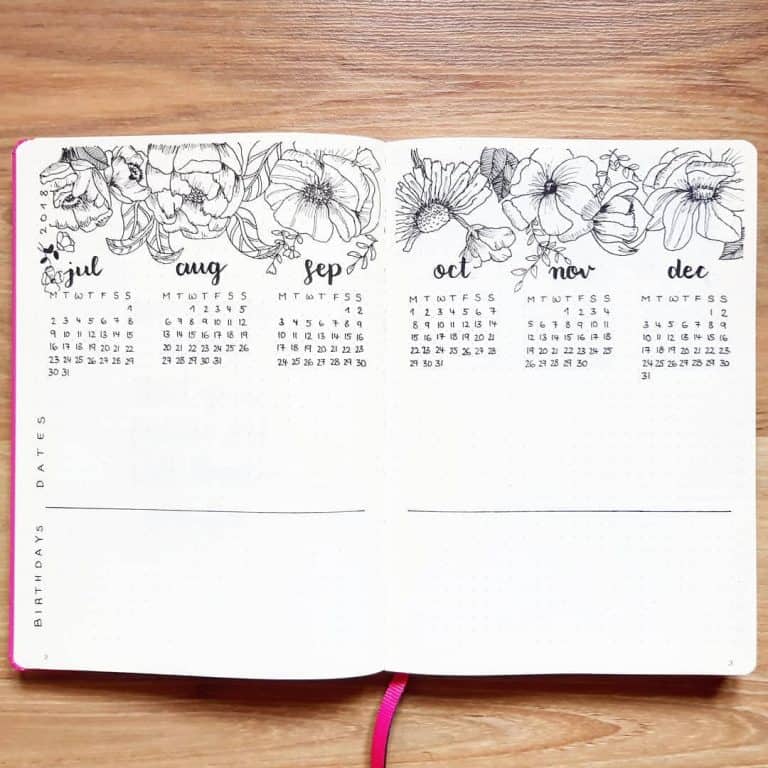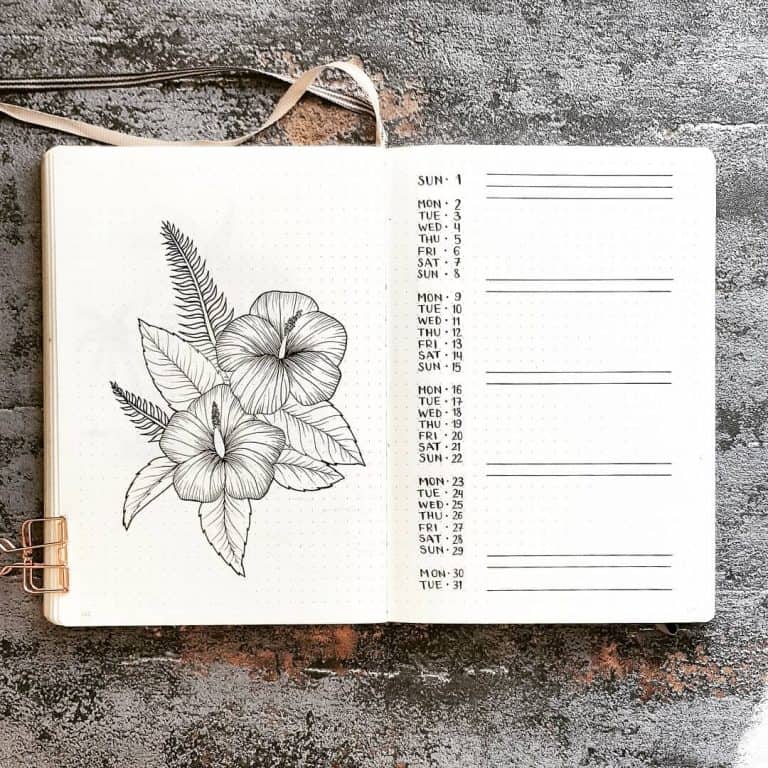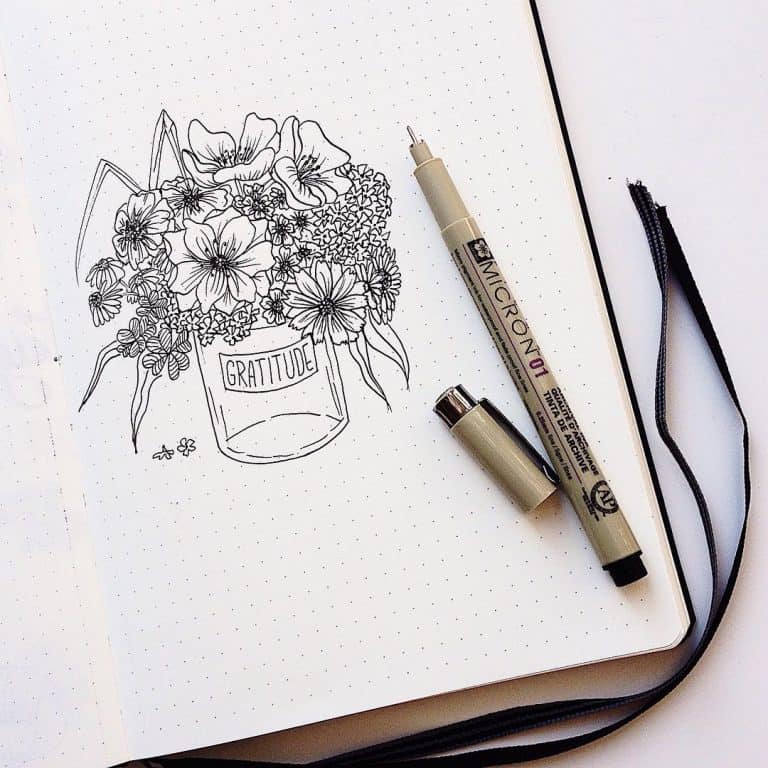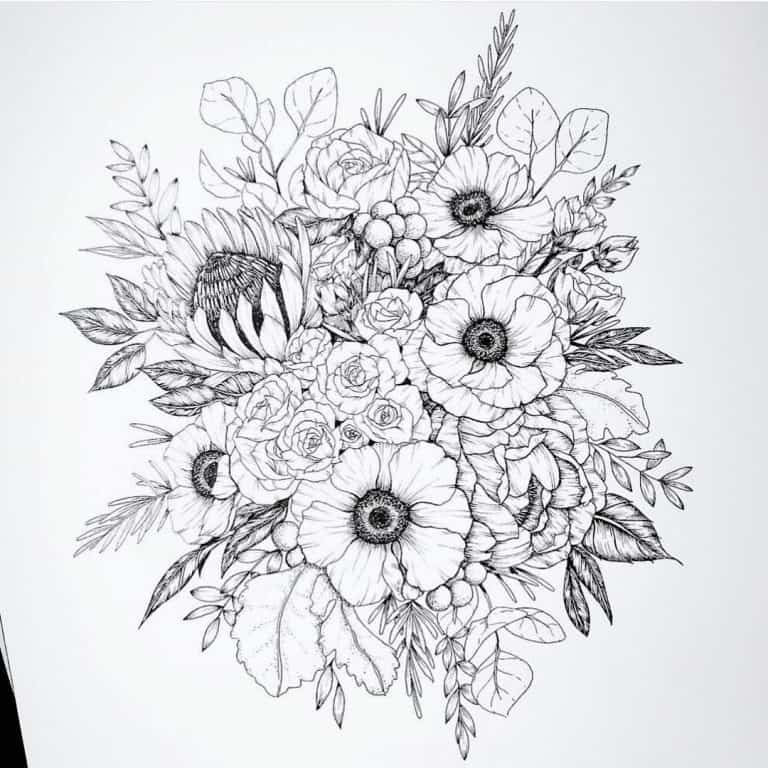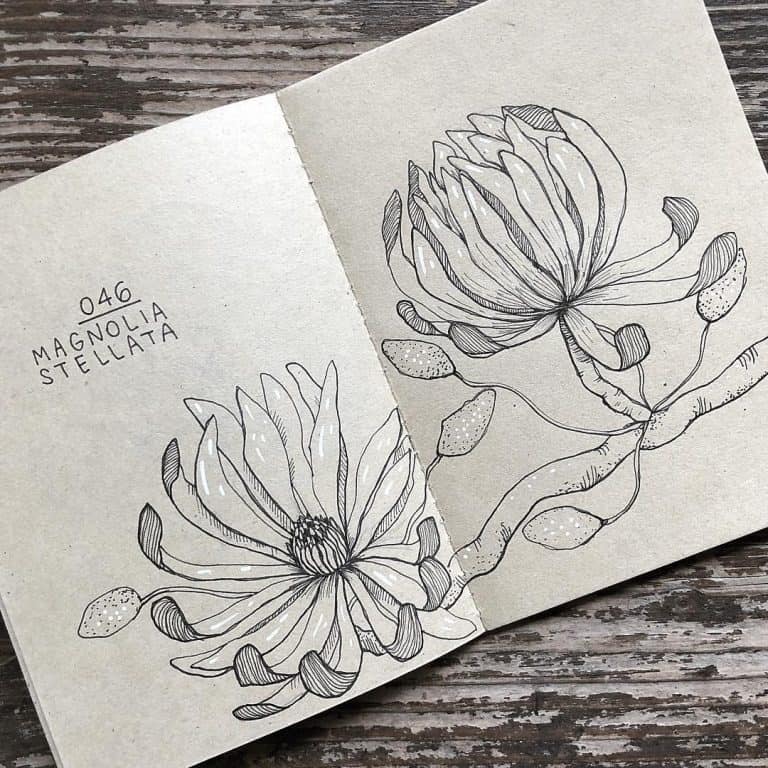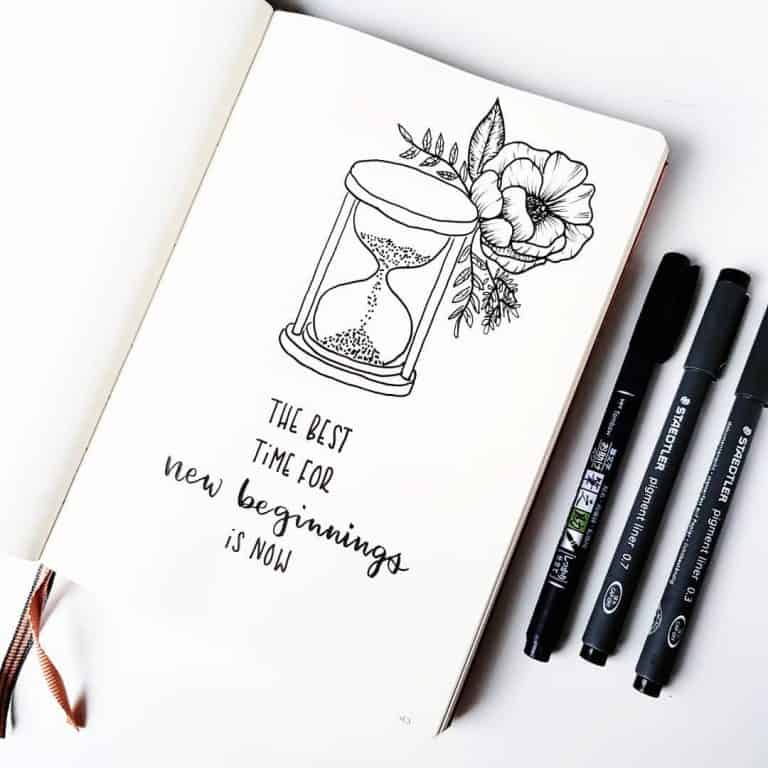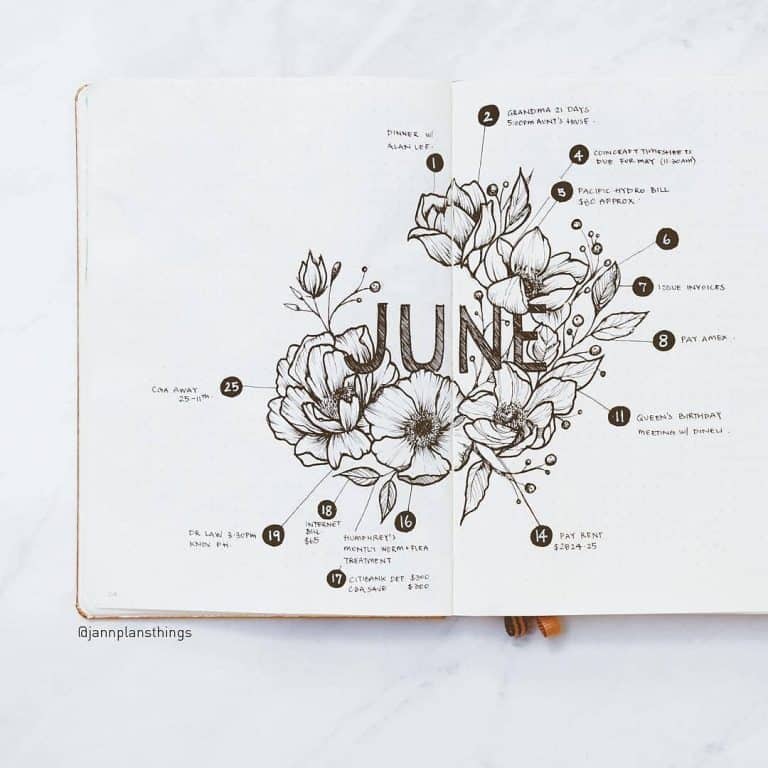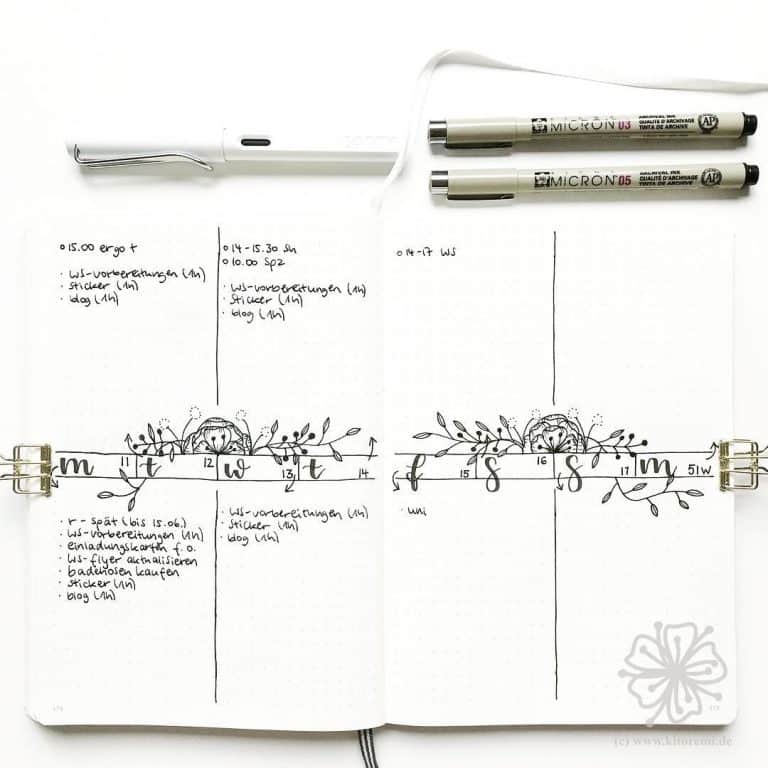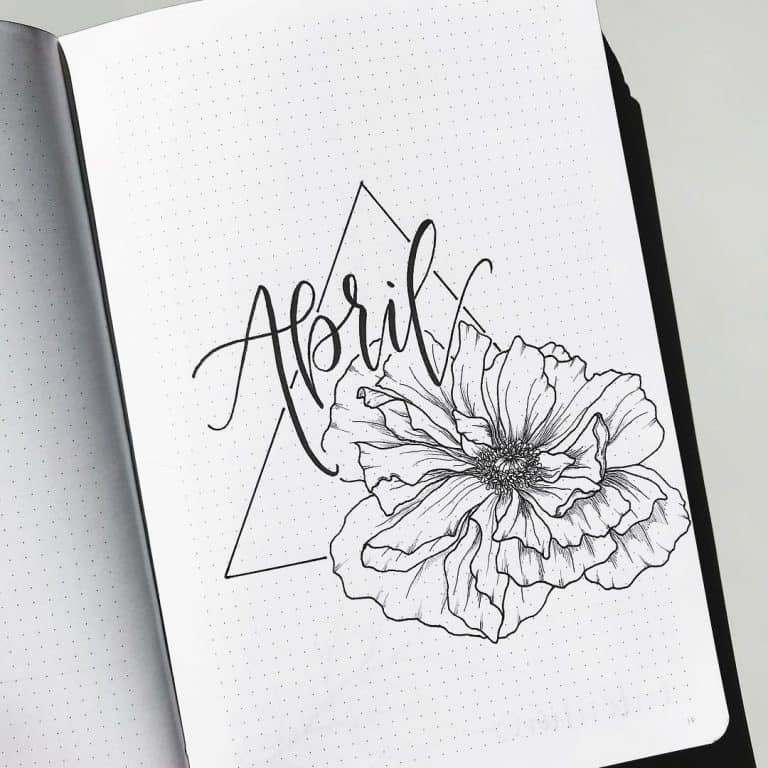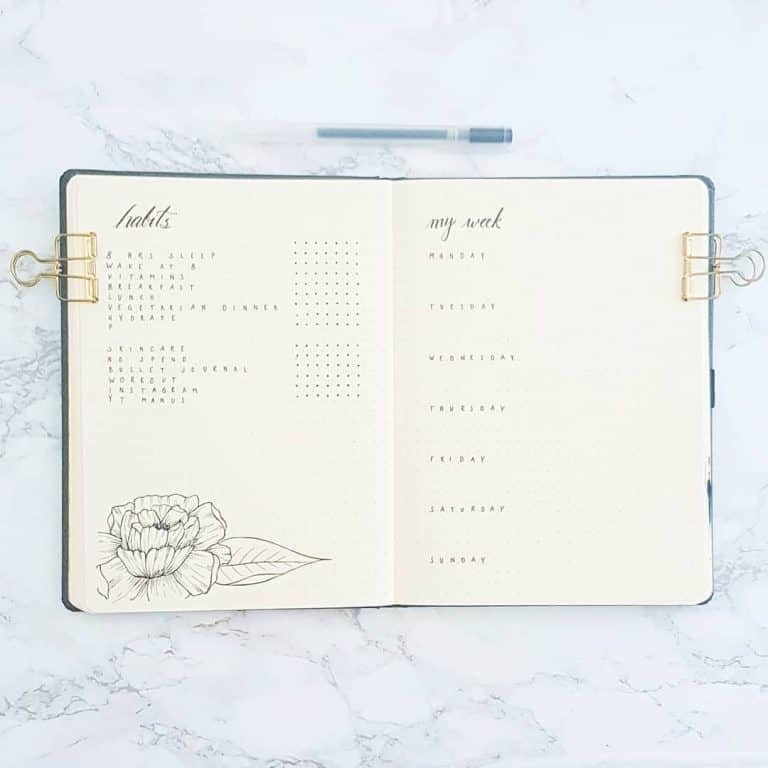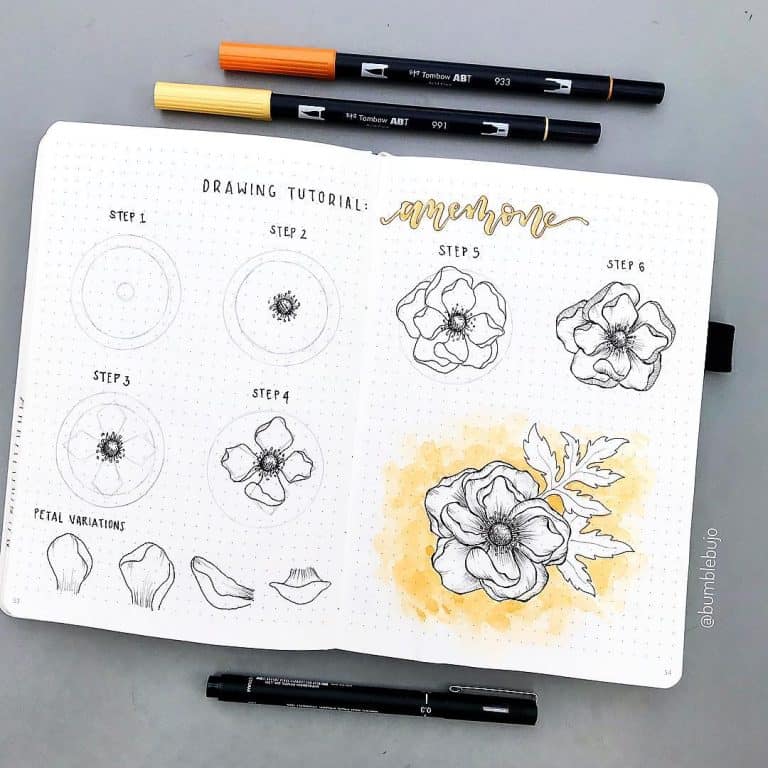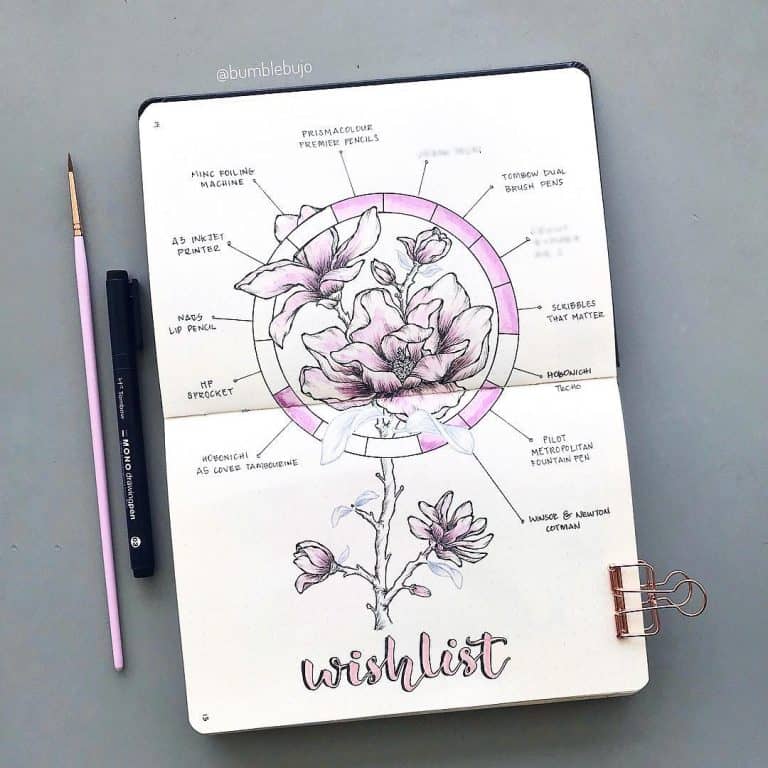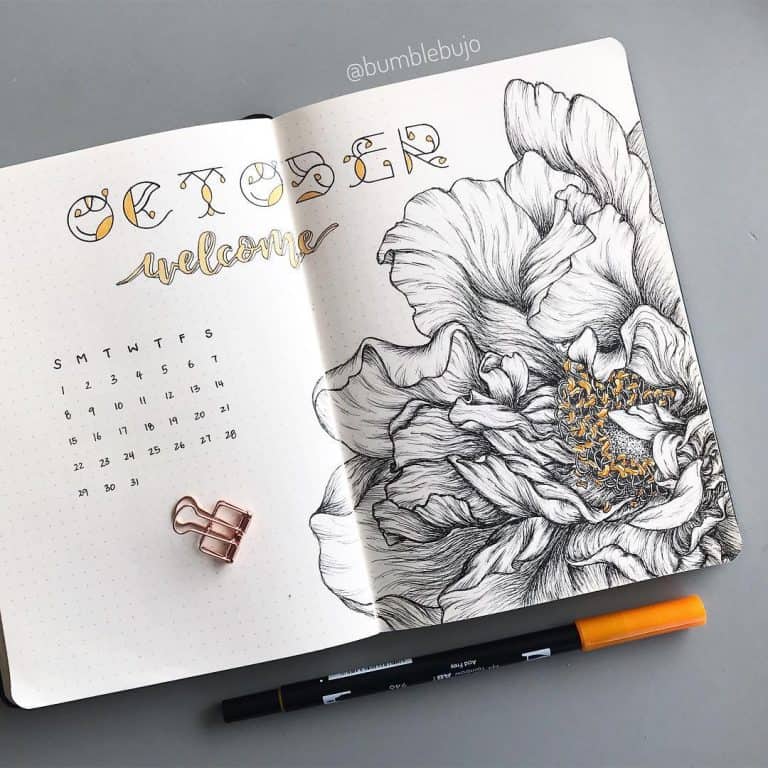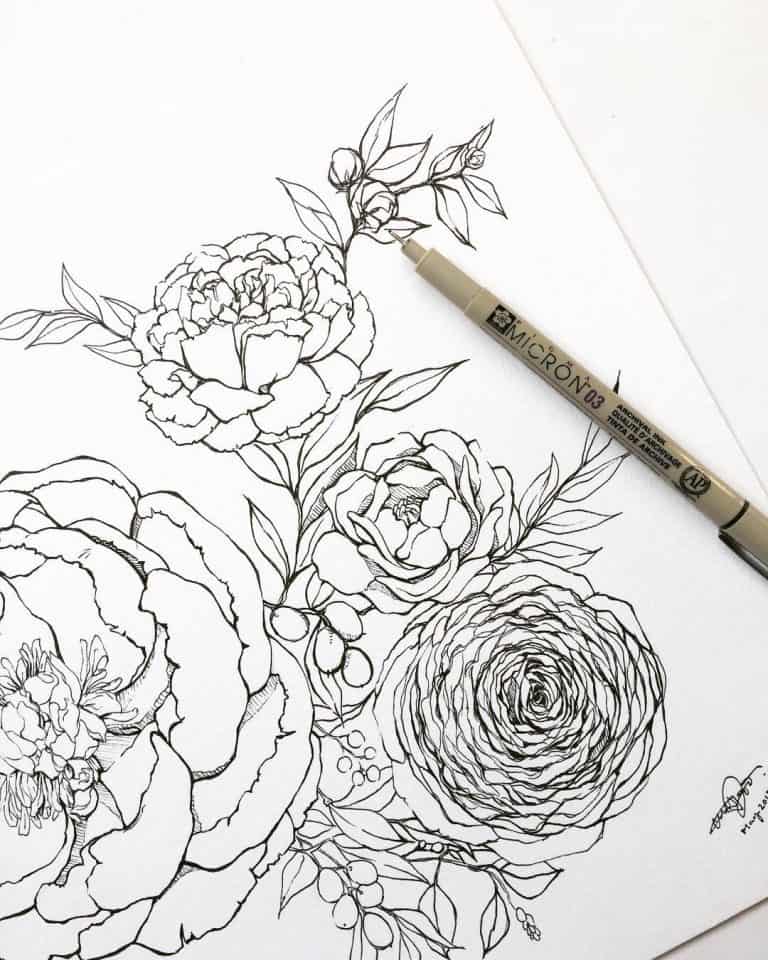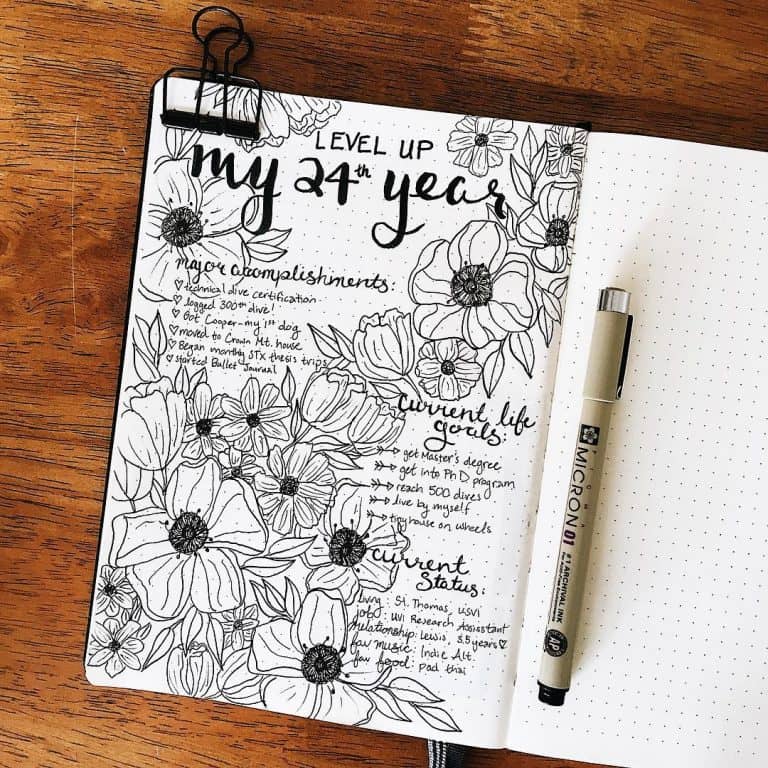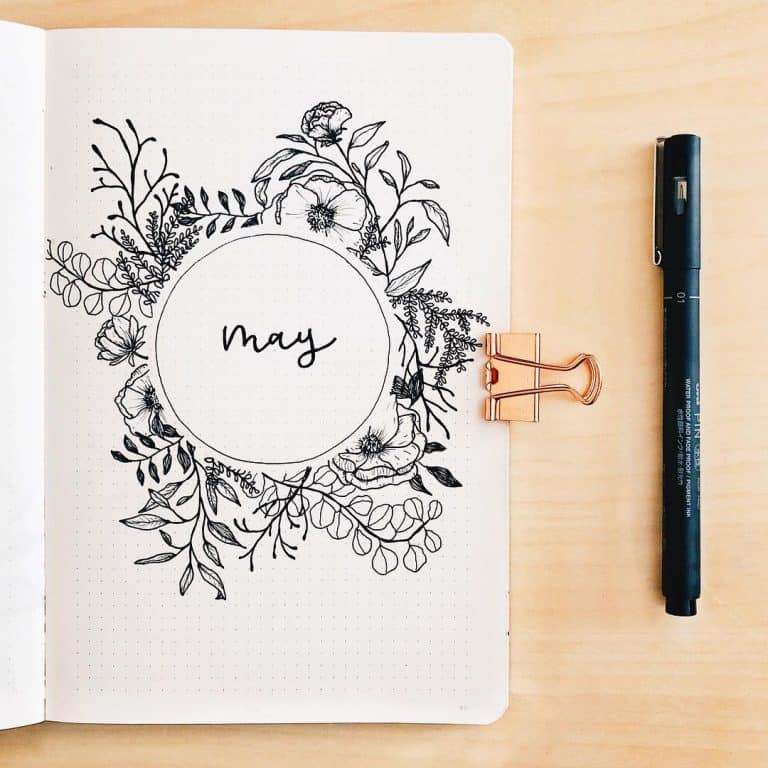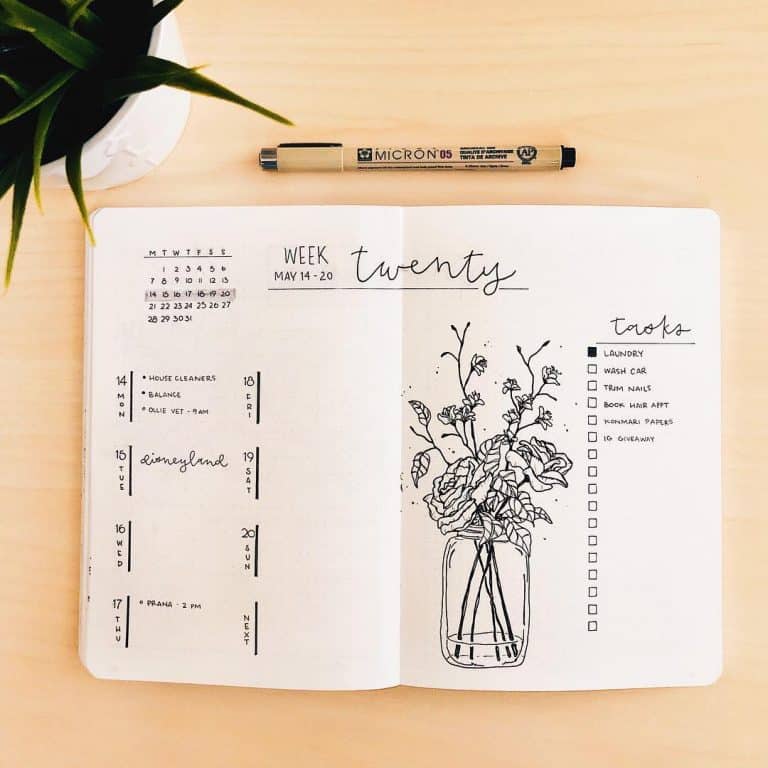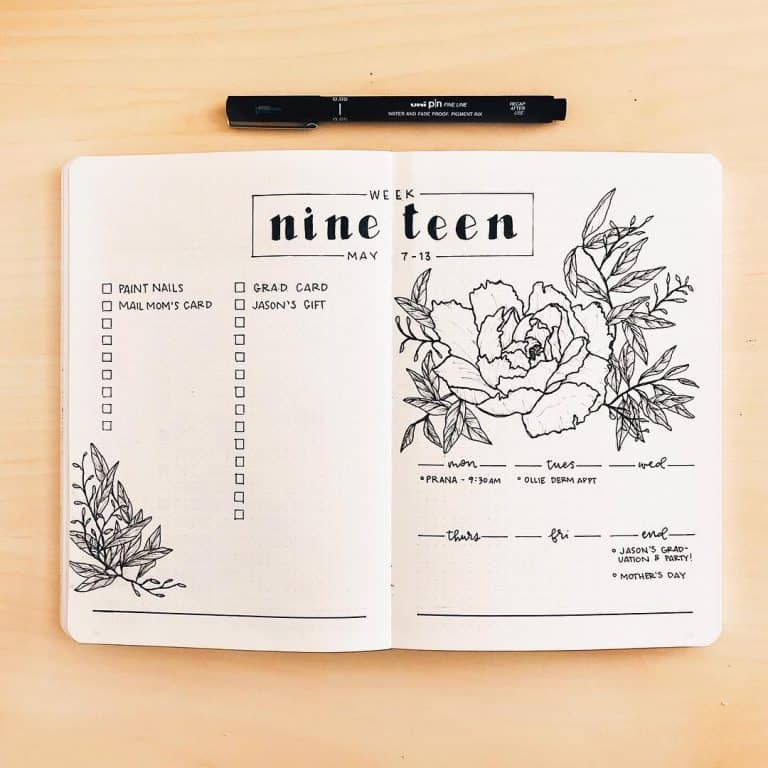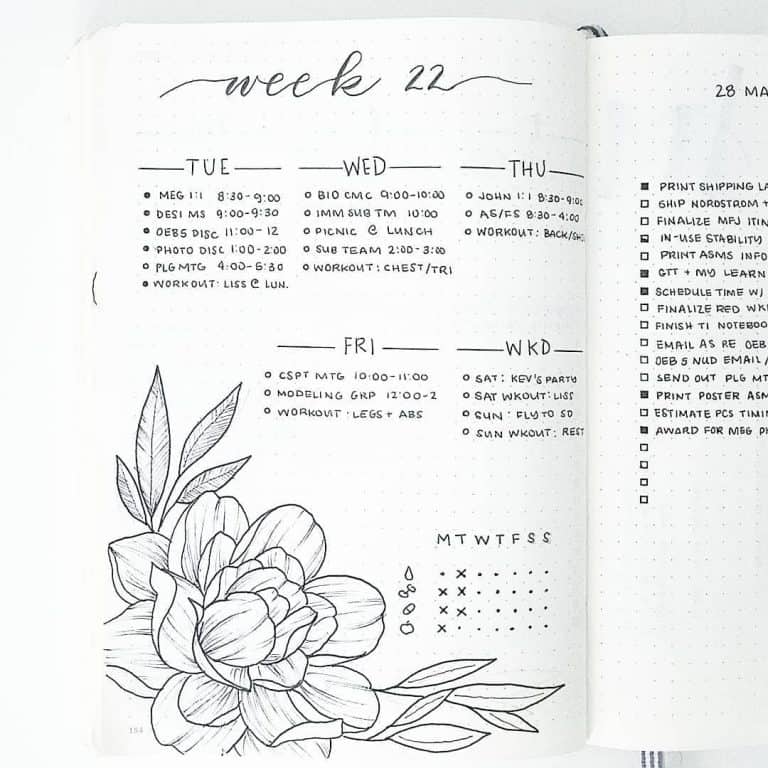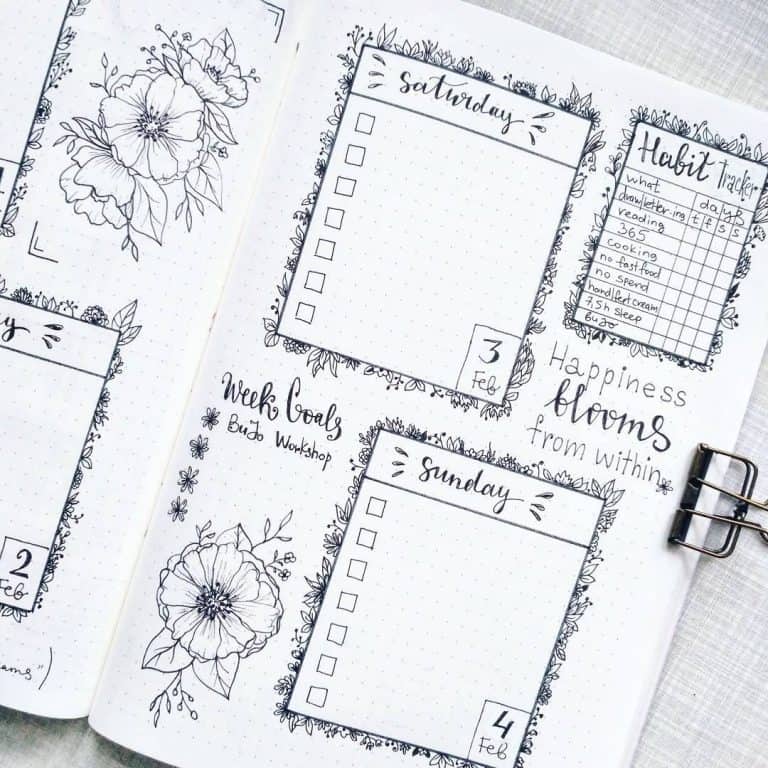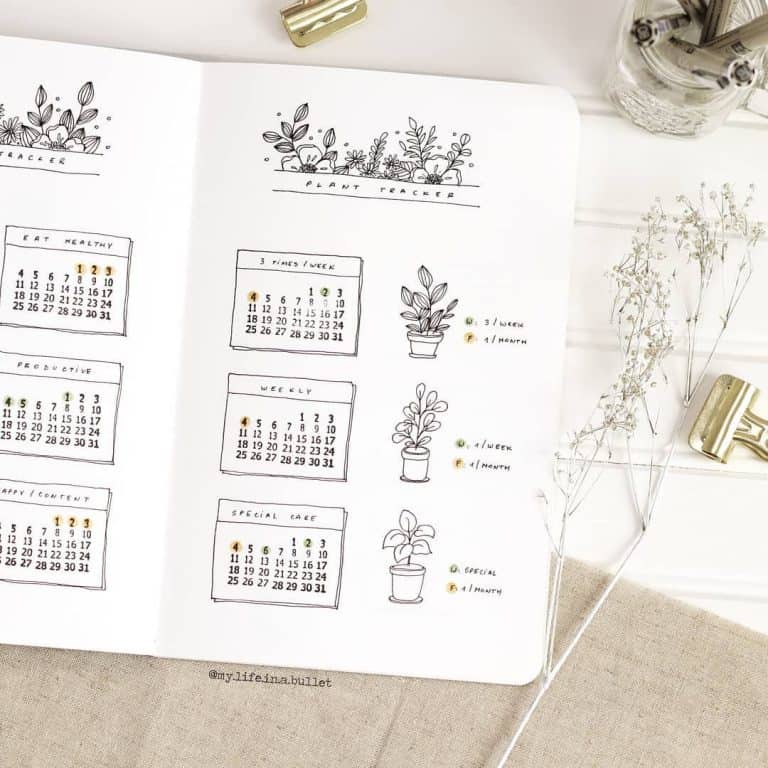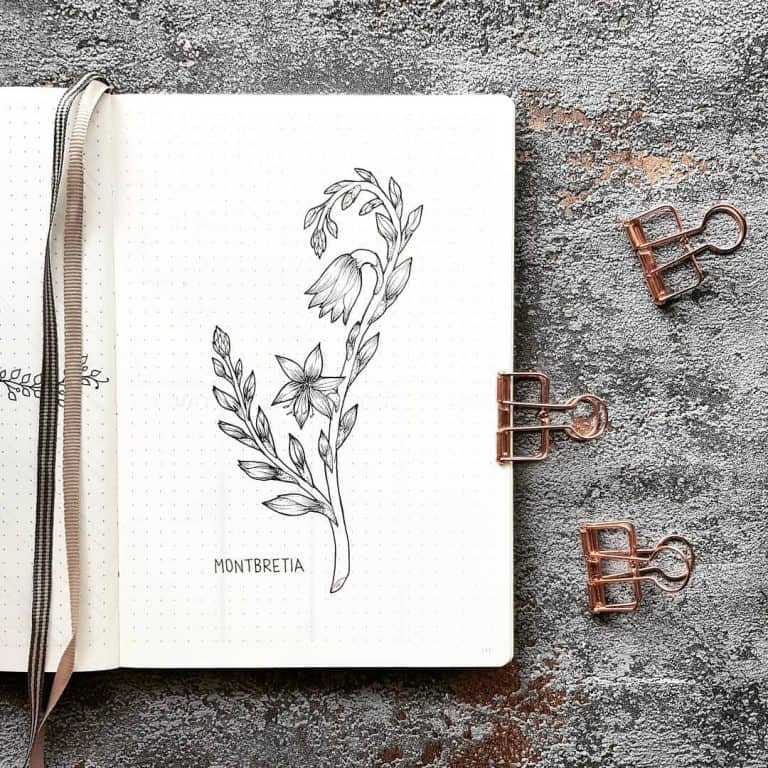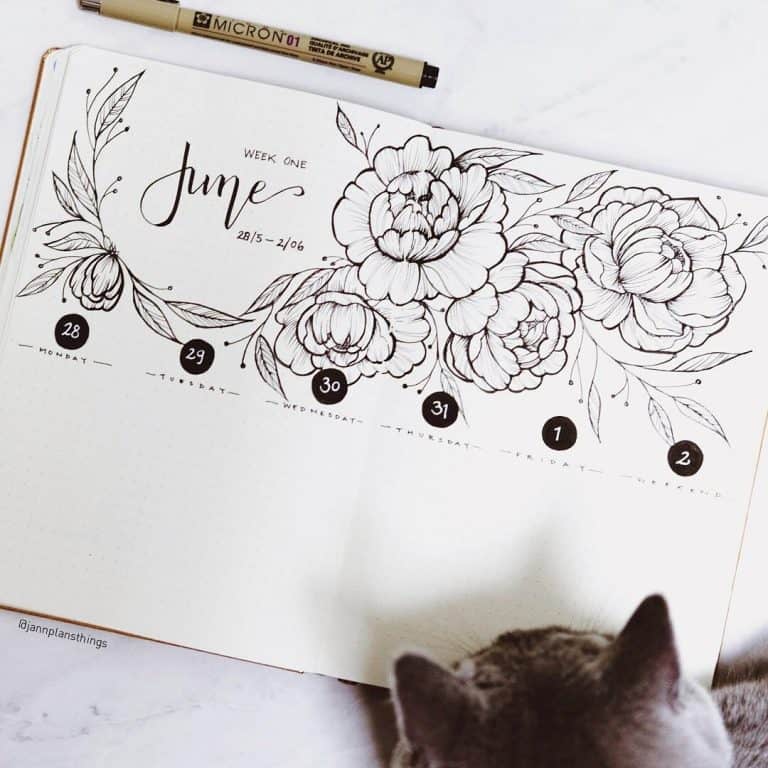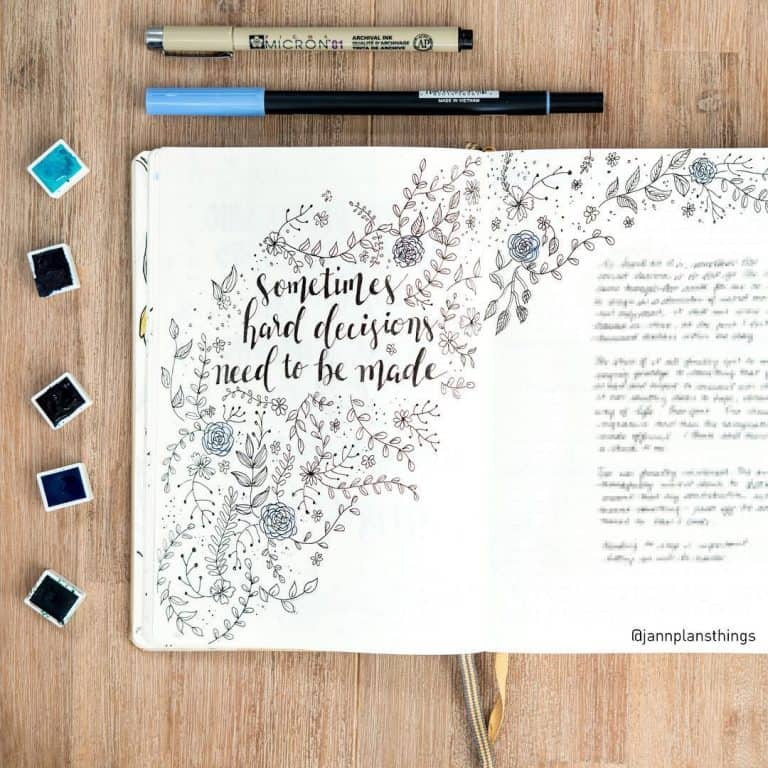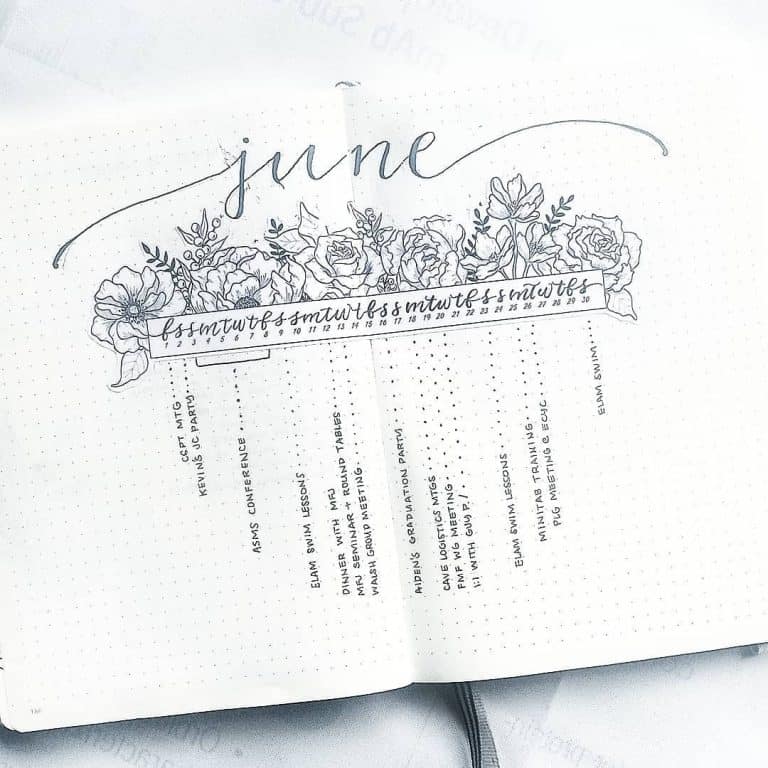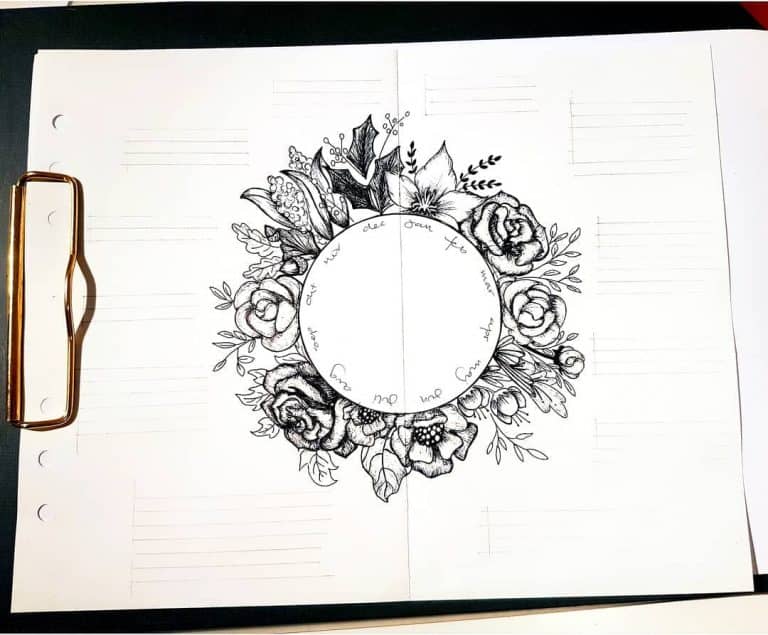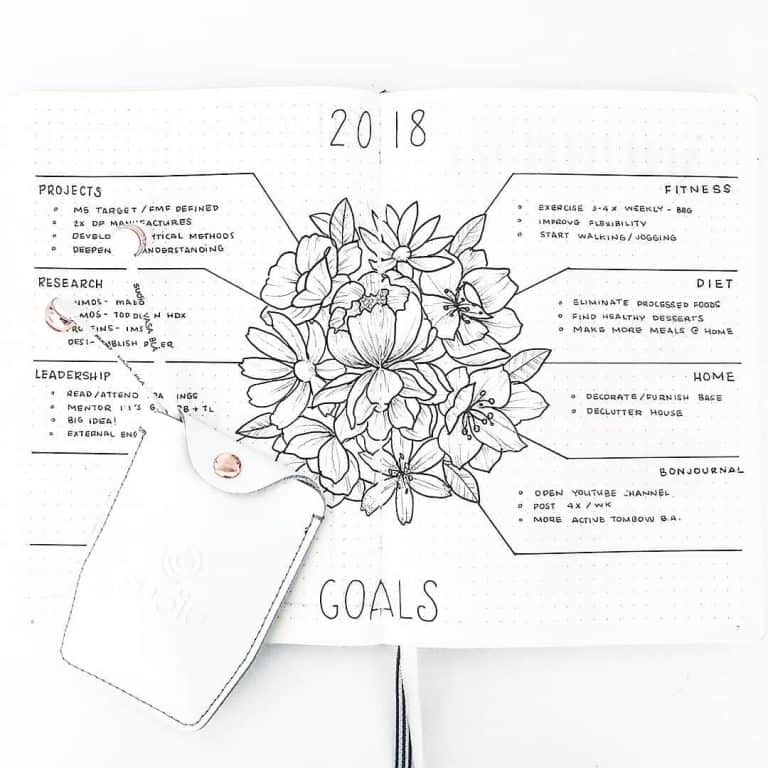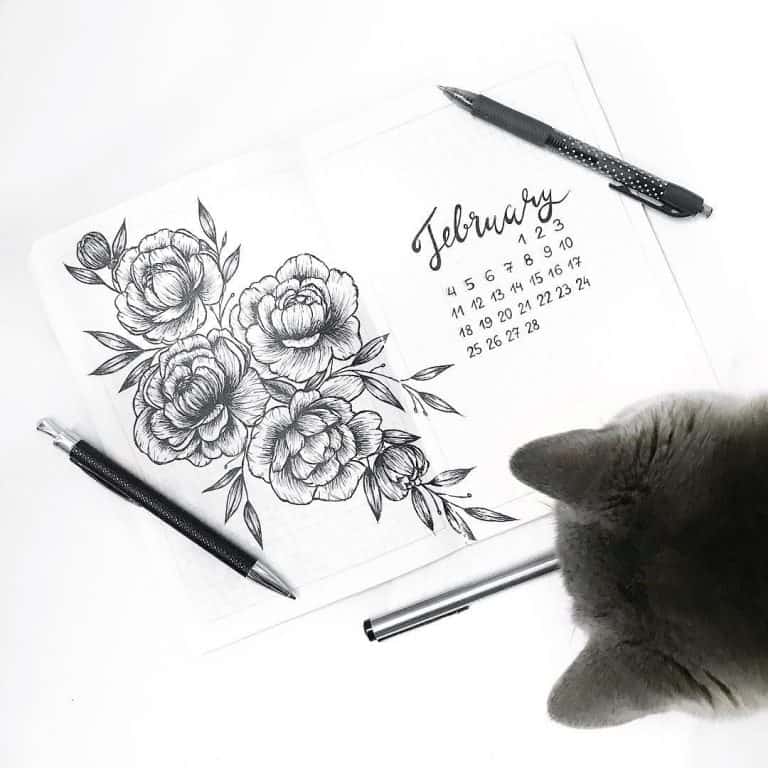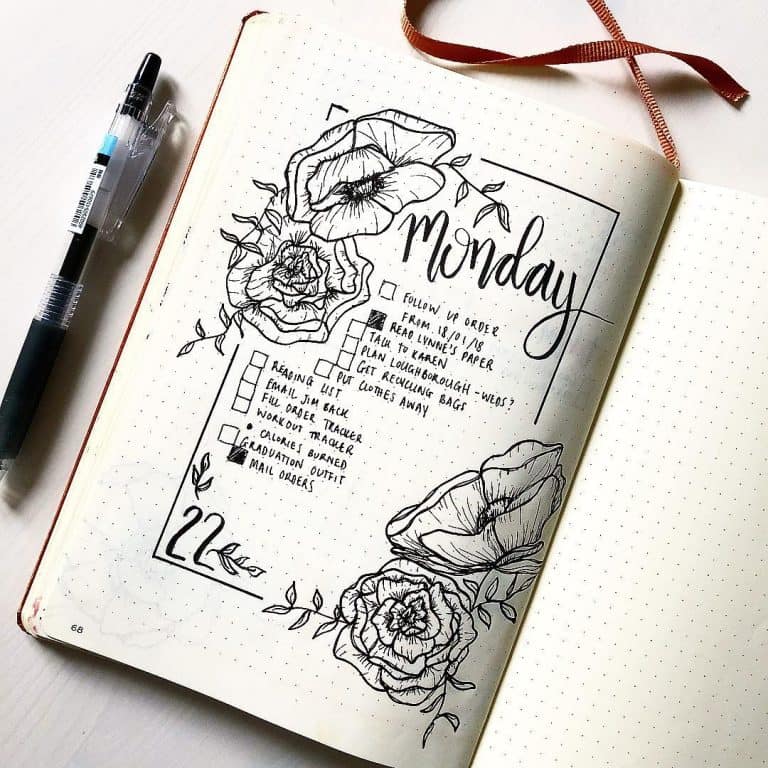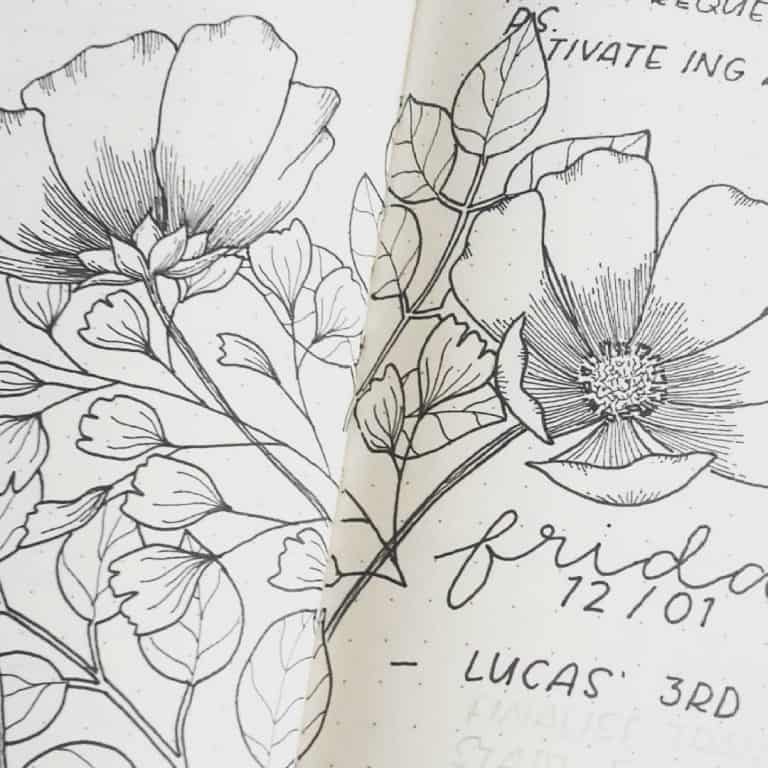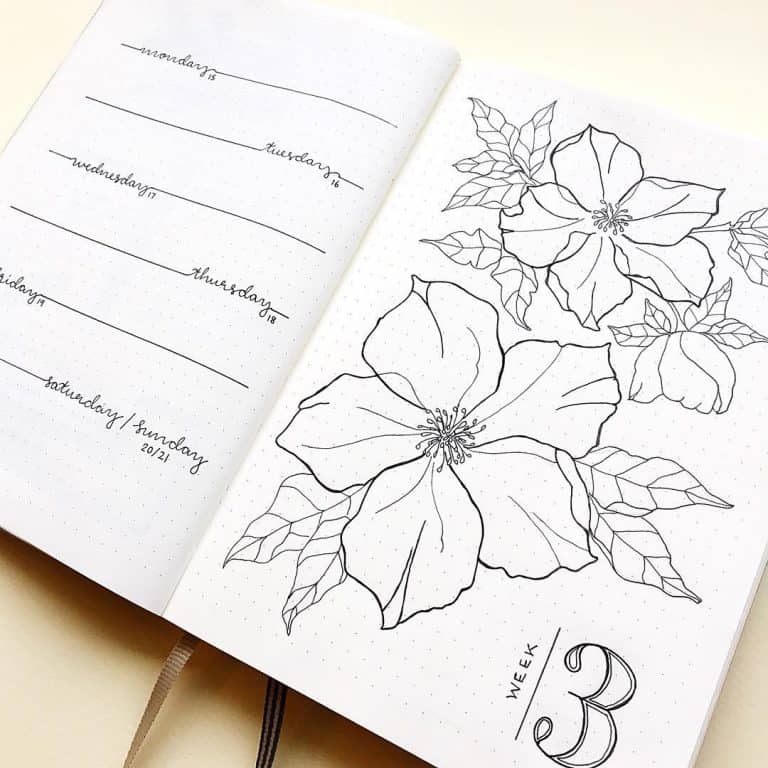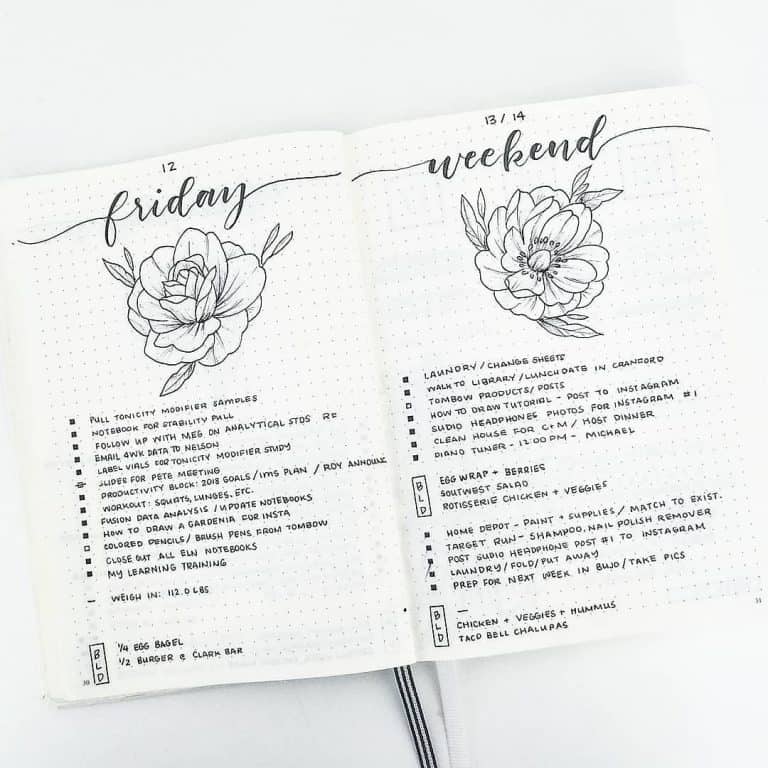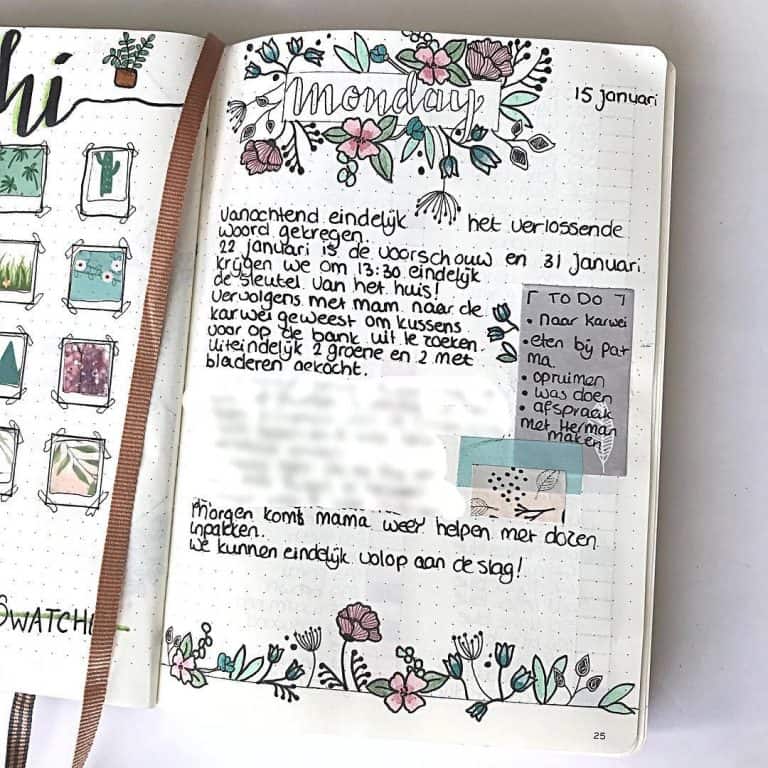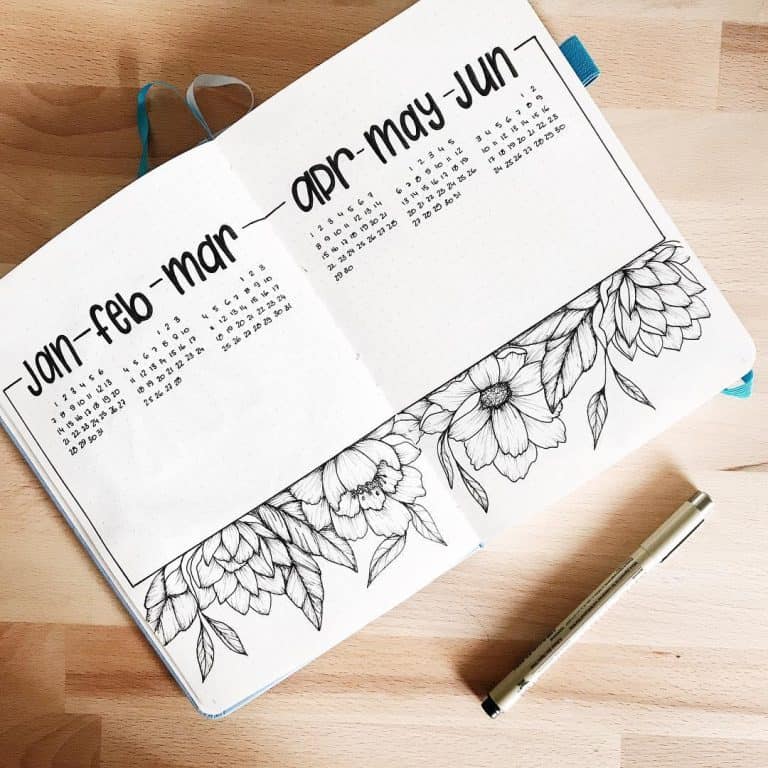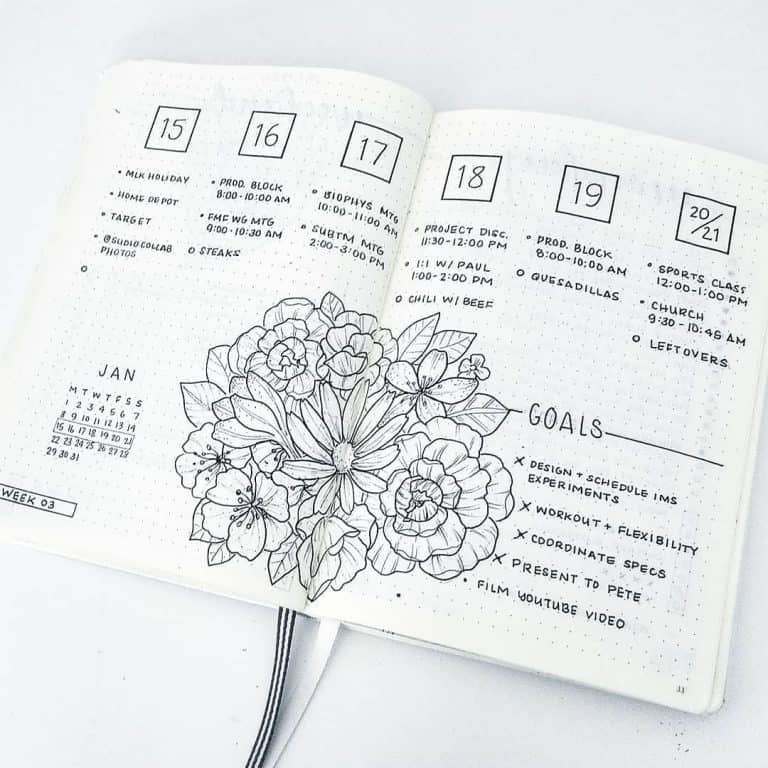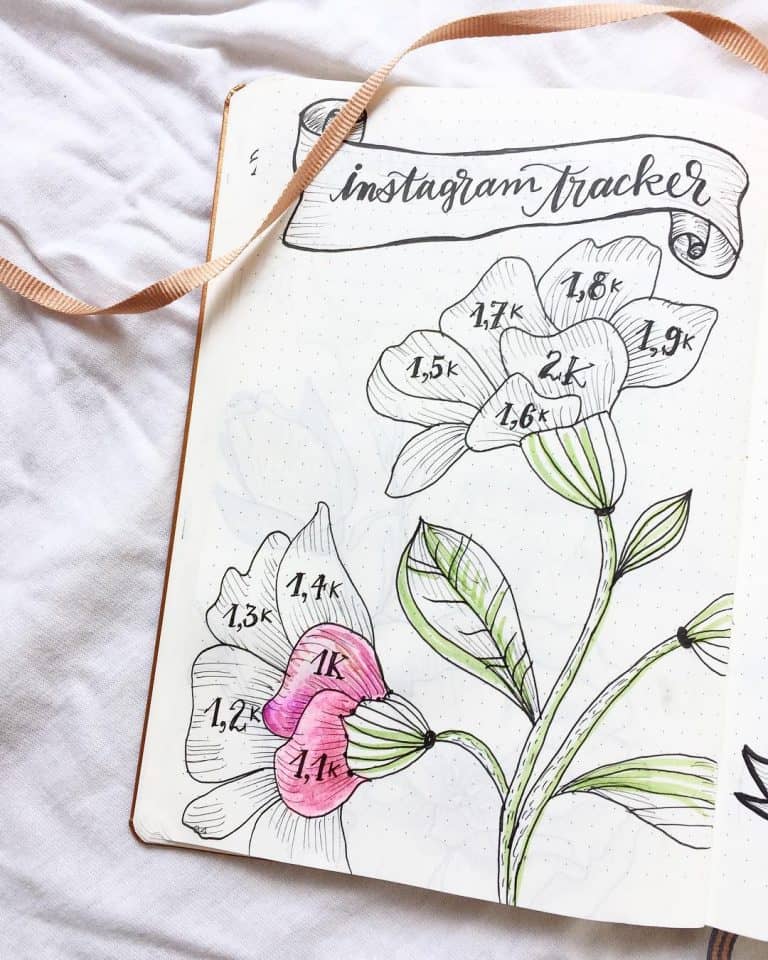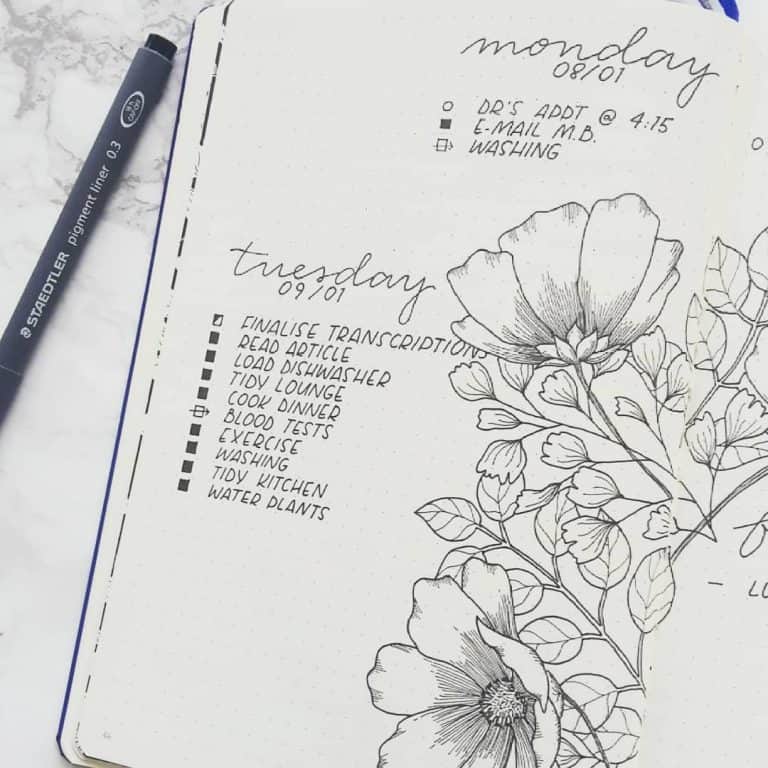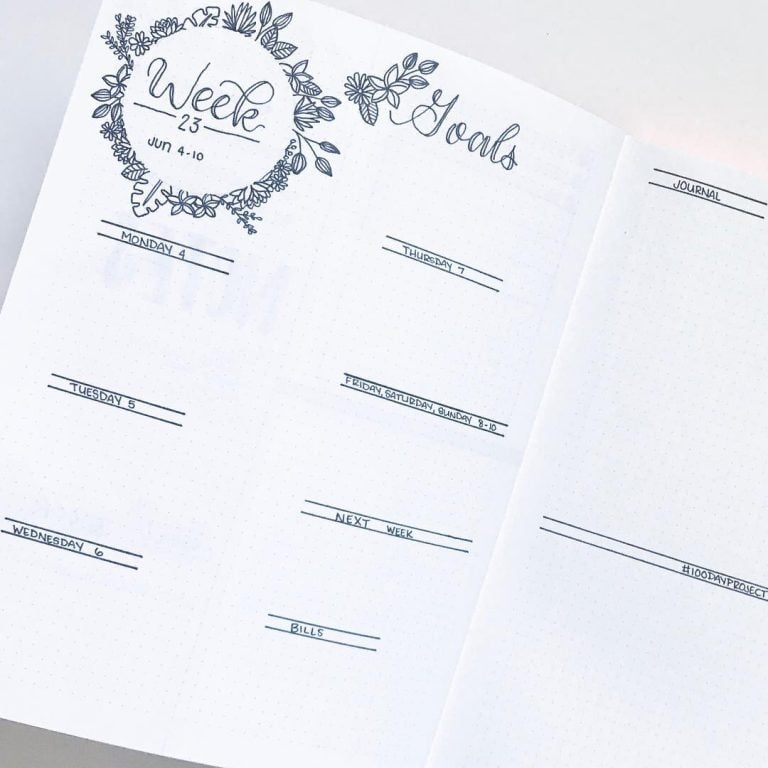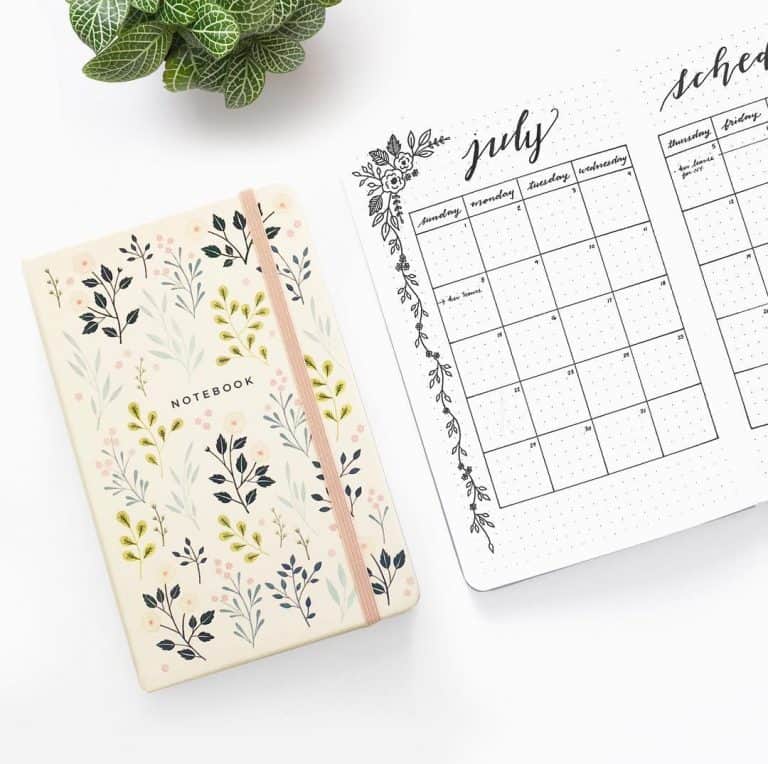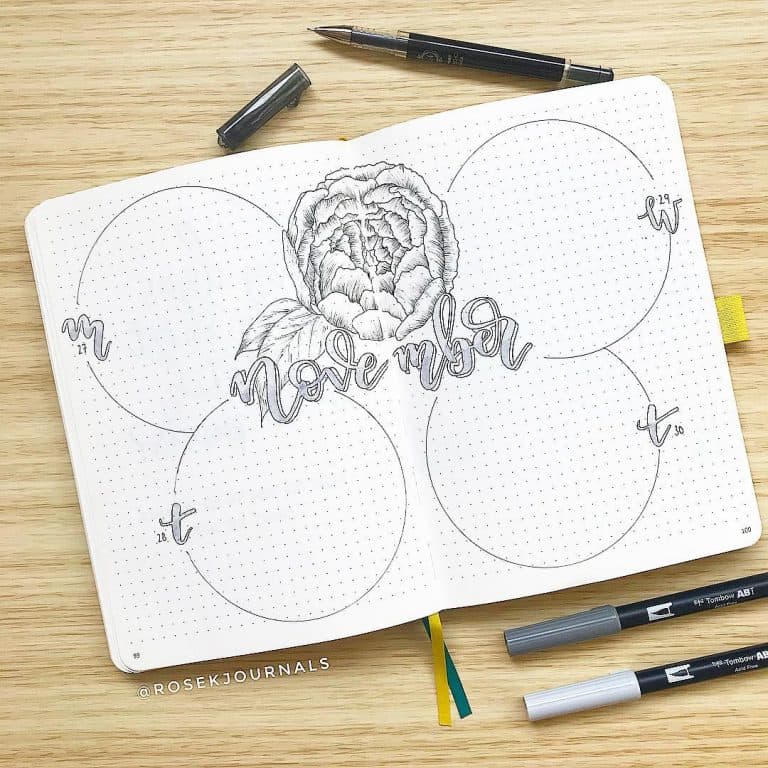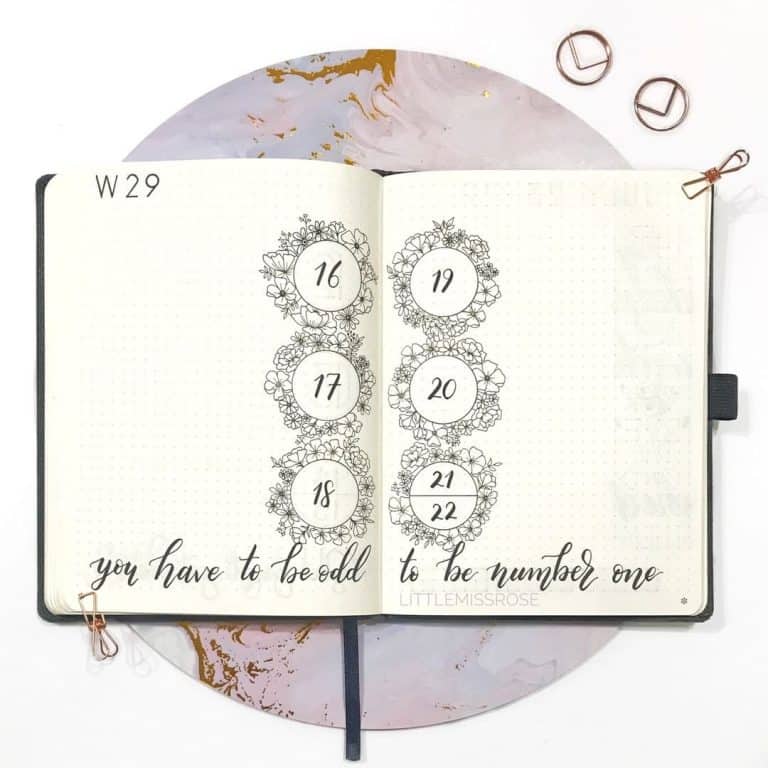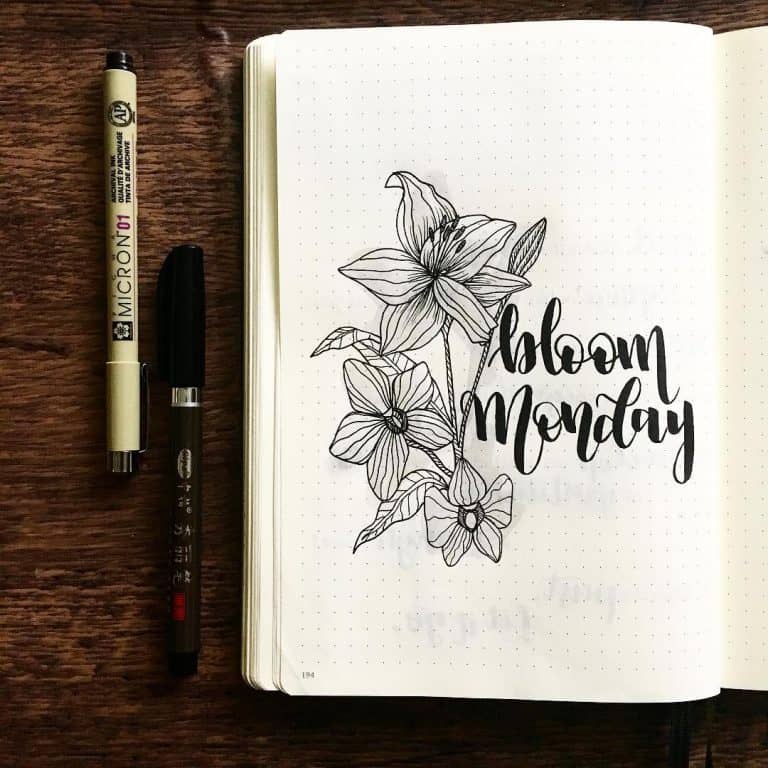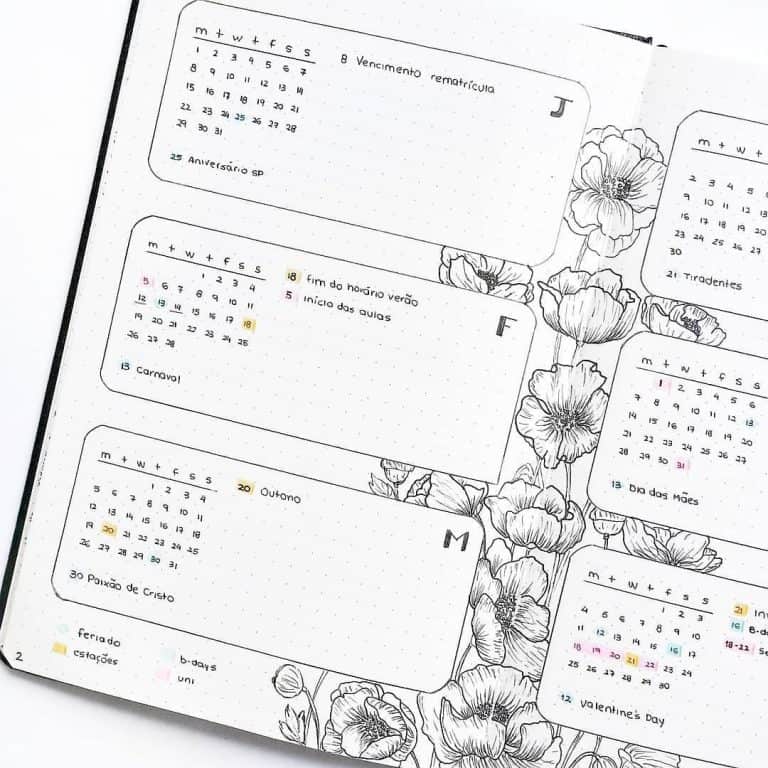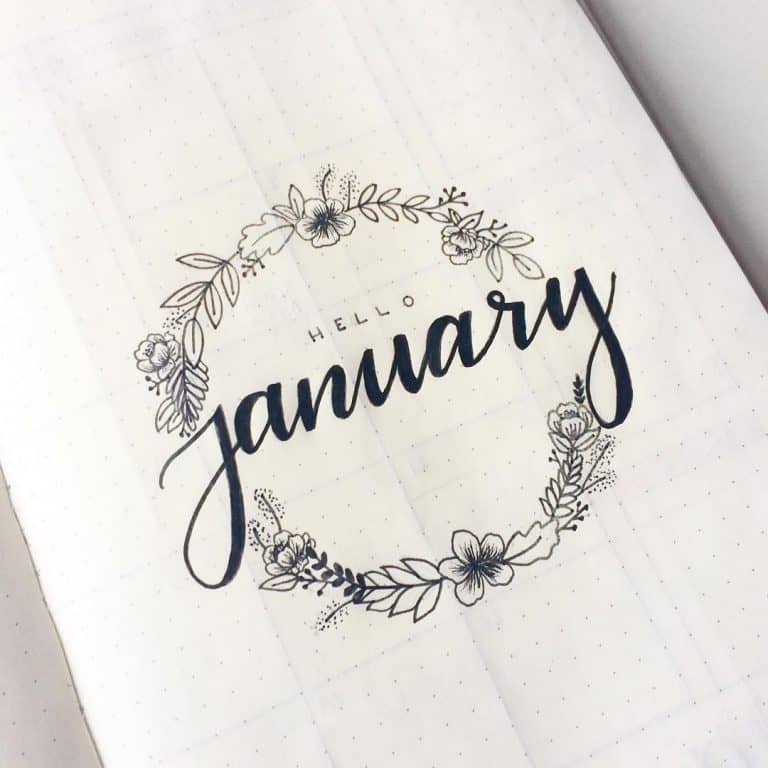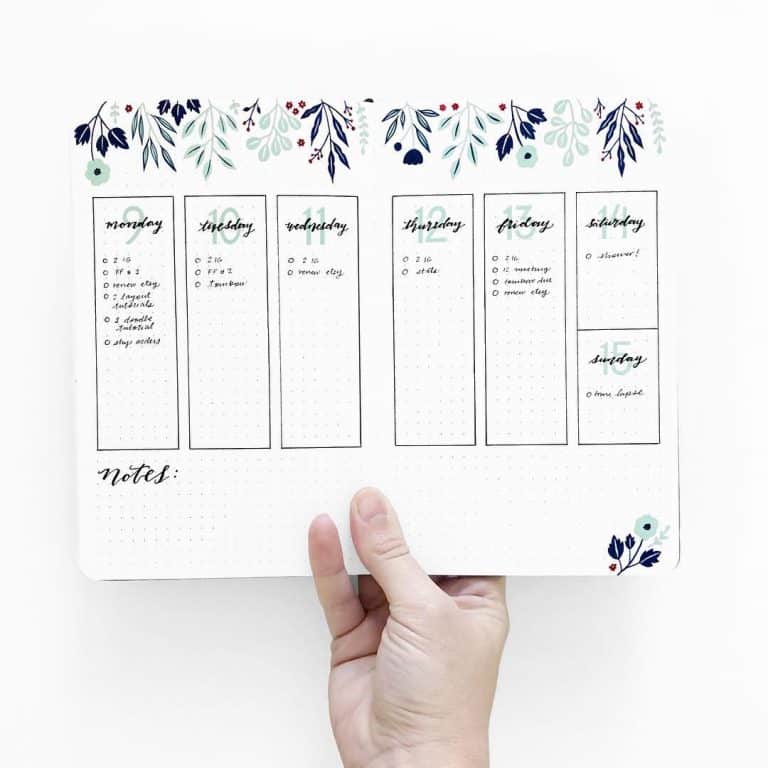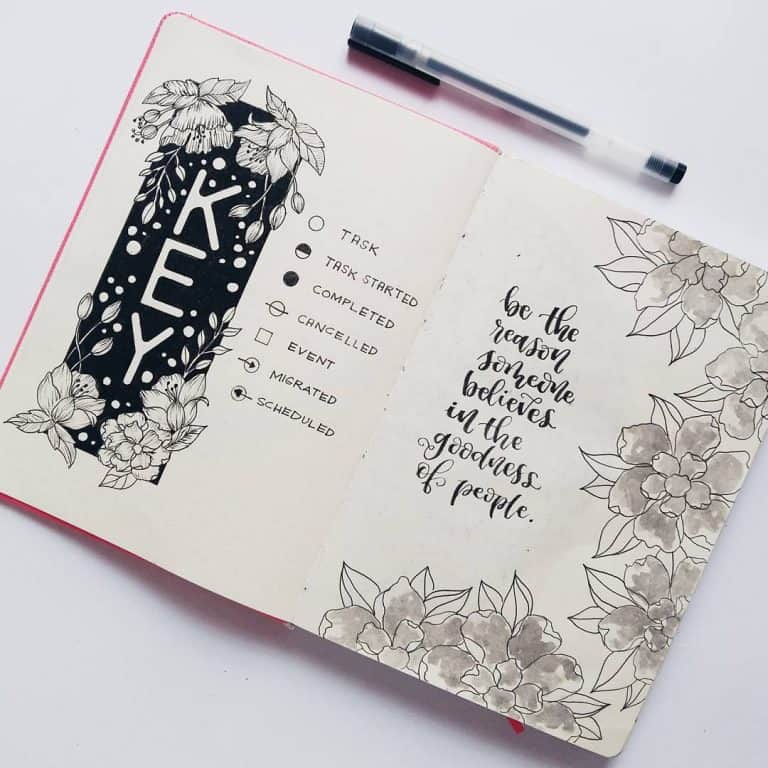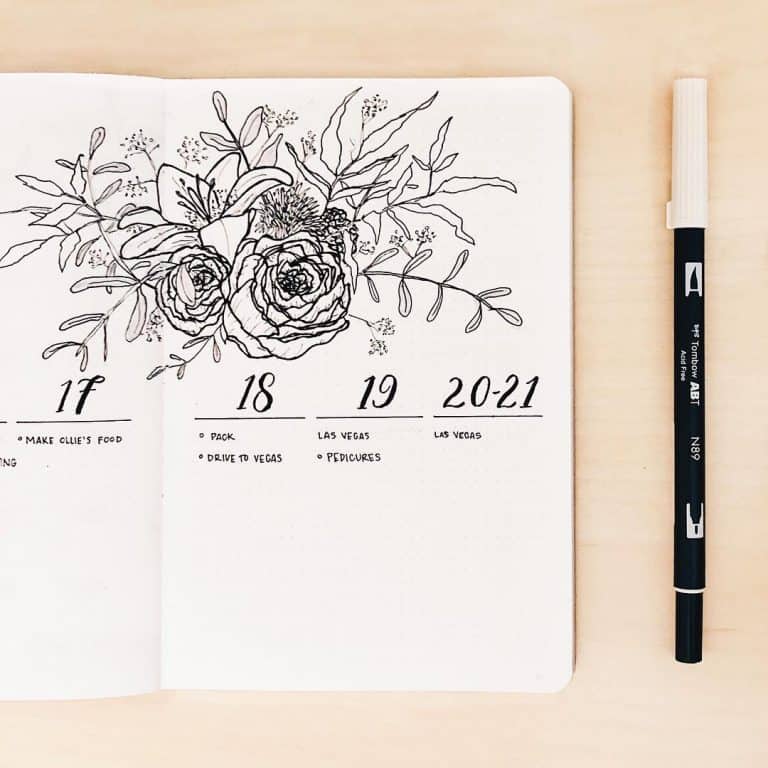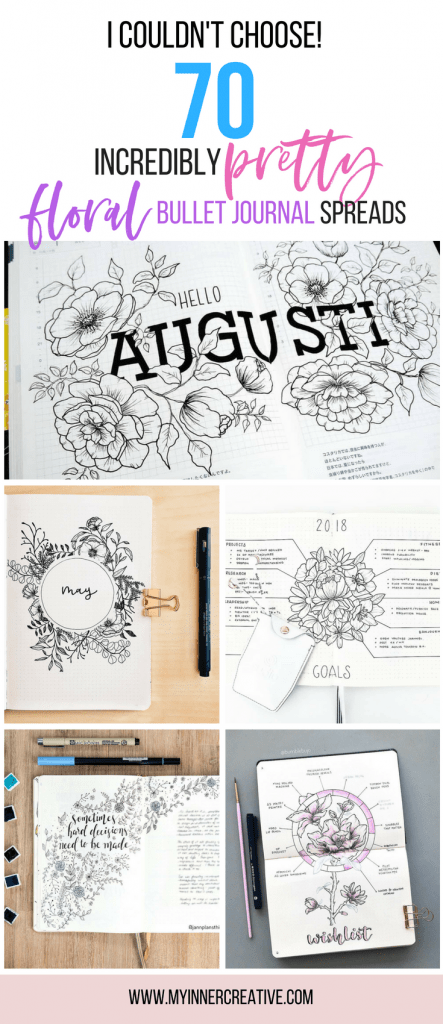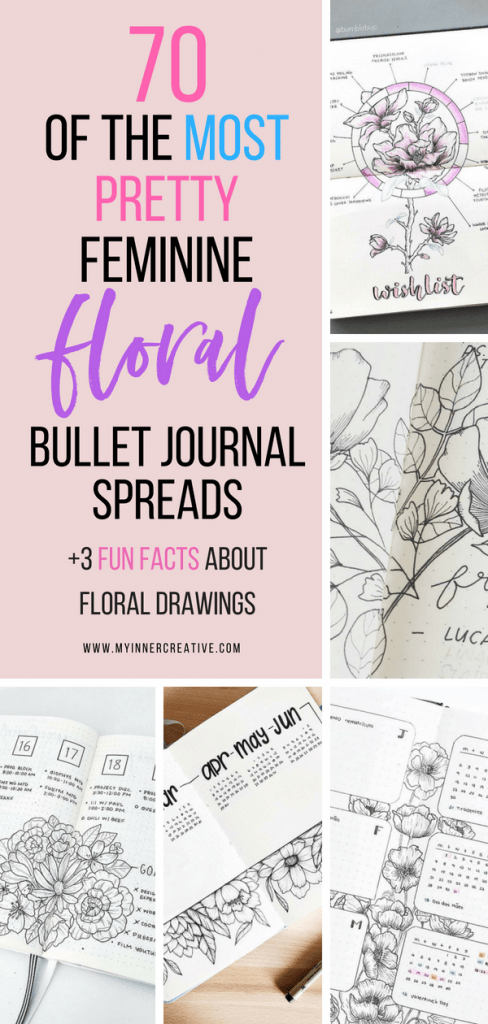70 incredibly pretty floral bullet journal spreads
Granted 70 is obviously a lot! But I couldn’t break it down! Yes I could have but I wanted to see all the pretty floral bullet journal spreads!! Drawing florals can be an absolute pleasure – I personally am absolutely terrible at it. So terrible in fact that I’ve shared my botanical drawing books with my Bujo Bestie over at Little Miss Rose.
But I will endeavour and keep trying! Because I also really want some pretty floral bullet journal spreads for 2019! My idea is to go minimalist, and have black simple flowers. But I guess practice will make perfect right!? So lets talk about how floral drawing and design historically came about! In our freebies section we have some really cute uploads of floral names which I update and add to weekly! Now if you aren’t to keen on florals but want to see some cactuses, head to this post with over 100 cactuses!
Lets learn to draw a floral border real quick!
How can you add floral drawings to your bullet journal?
There are a squillion floral and flower doodle tutorials on the web to help you create gorgeous floral pages, another way you can do this is through either using stamps or stickers which will be a great way to create some simple pages in minimal time! If you want to see some awesome doodles, check out this post on 100+ doodles to draw in your bullet journal!
3 Facts about Botanical Drawings
Rooted in ancient art and still prevalent today, depictions of blossoms, blooms, and other botanical elements can be found in many of the most significant art movements, whether carved into clay or starring in a still-life. Here, we trace the history of the humble flower in art, exploring its evolution and identifying iconographic trends that have attracted artists for centuries. Early herbals and pharmacopoeia of many cultures have included the depiction of plants.
1. Earliest Botanical drawing book is the Codex vinodbonesis
This was intended to assist identification of a species, usually with some medicinal purpose. The earliest surviving illustrated botanical work is the Codex vindobonensis.
2. The inability to easily reproduce print could result in the wrong medicine!
The problem of accurately describing plants between regions and languages, before the introduction of taxonomy, were potentially hazardous to medicinal preparations. The low quality of printing of early works sometimes presents difficulties in identifying the species depicted.
3. There is a job called a Botanical Illustrator
When systems of botanical nomenclature began to be published, the need for a drawing or painting became optional. However, it was at this time that the profession of botanical illustrator began to emerge. The eighteenth century saw many advances in the printing processes, and the illustrations became more accurate in colour and detail.
The increasing interest of amateur botanists, gardeners, and natural historians provided a market for botanical publications; the illustrations increased the appeal and accessibility of these to the general reader. The field guides, Floras, catalogues and magazines produced since this time have continued to include illustrations.
The development of photographic plates has not made illustration obsolete, despite the improvements in reproducing photographs in printed materials. A botanical illustrator is able to create a compromise of accuracy, an idealized image from several specimens, and the inclusion of the face and reverse of the features such as leaves. Additionally, details of sections can be given at a magnified scale and included around the margins around the image.
Some amazing books to help you draw flowers in your bullet journal
An onto our featured floral bullet journal spreads!
